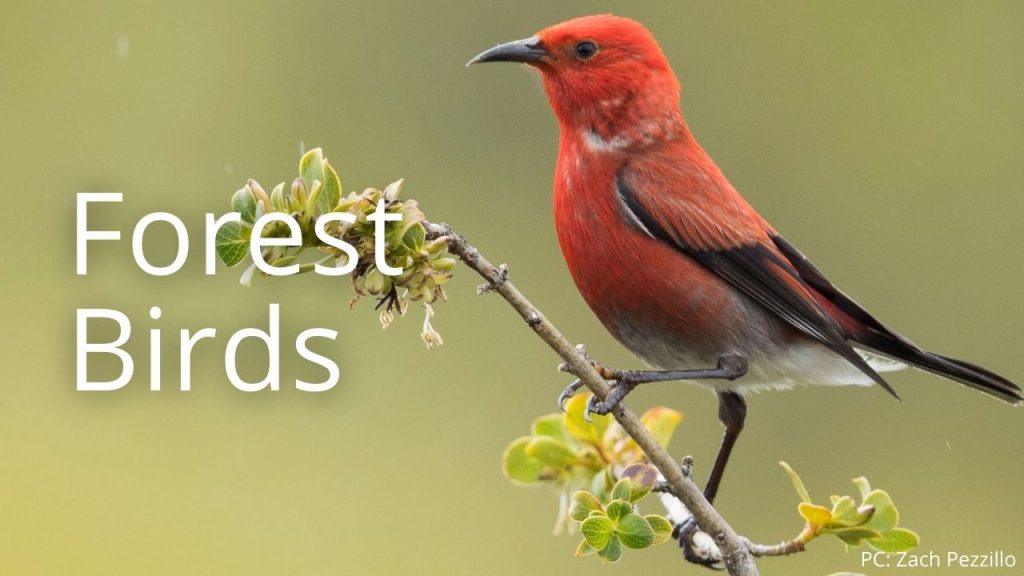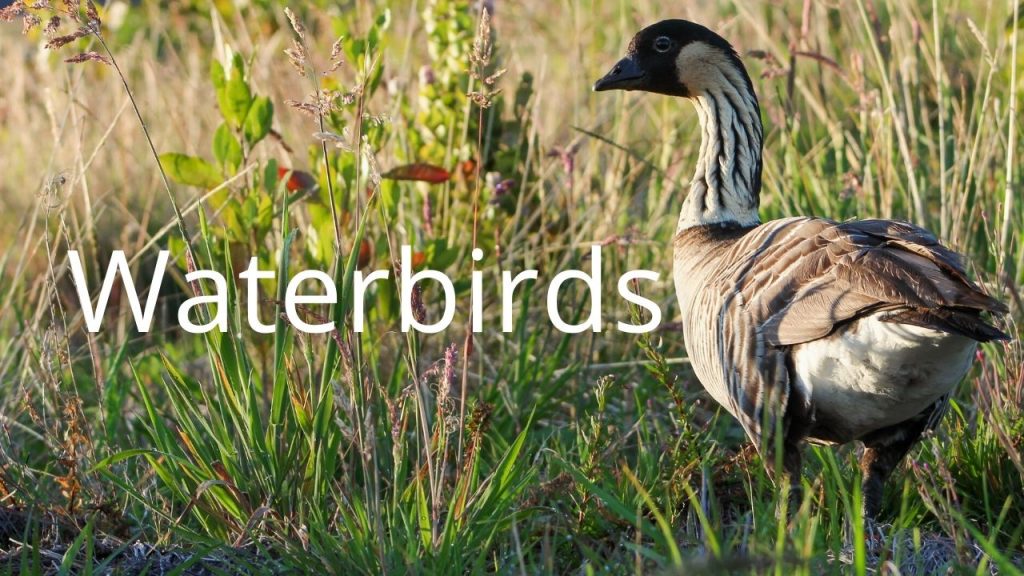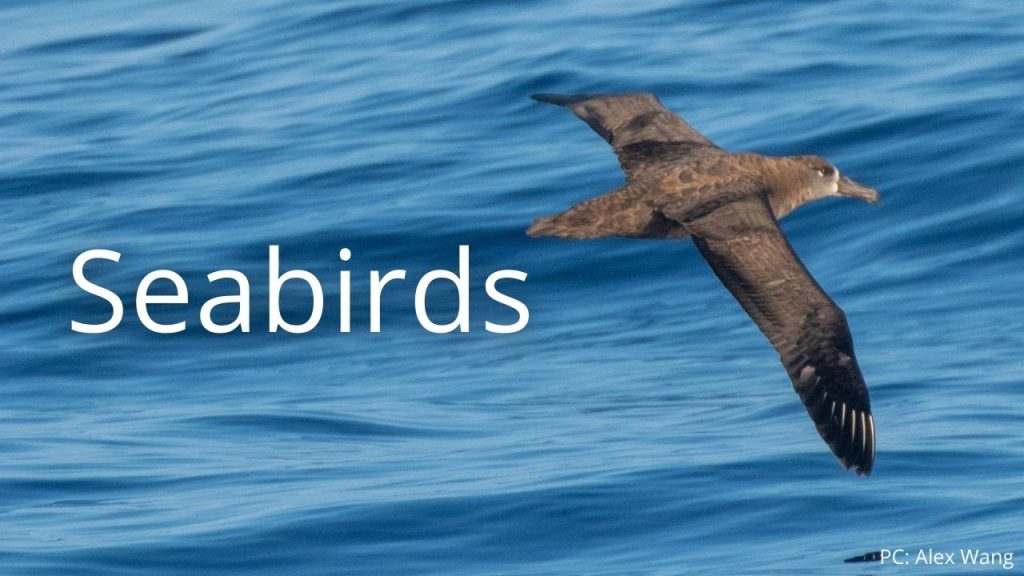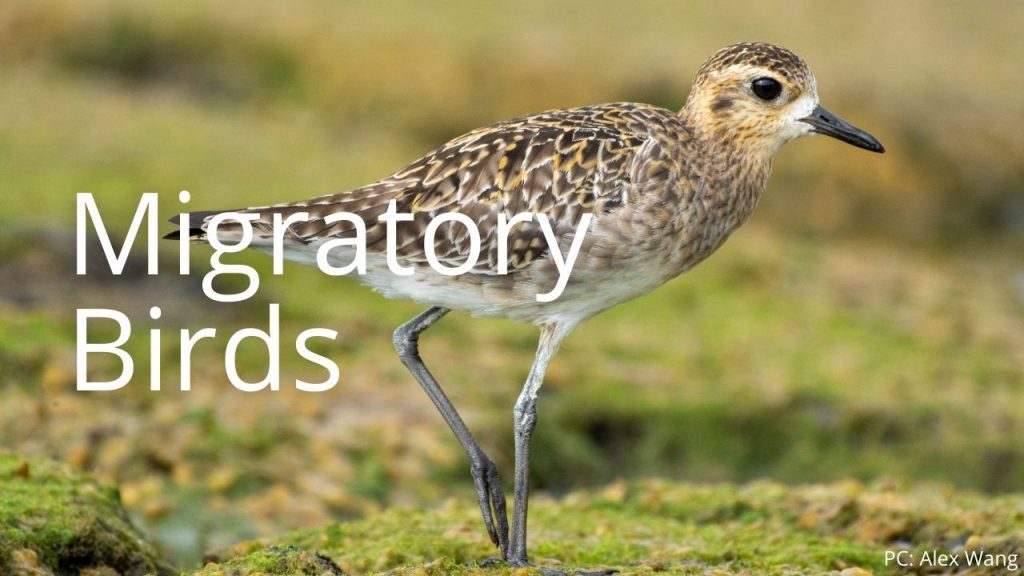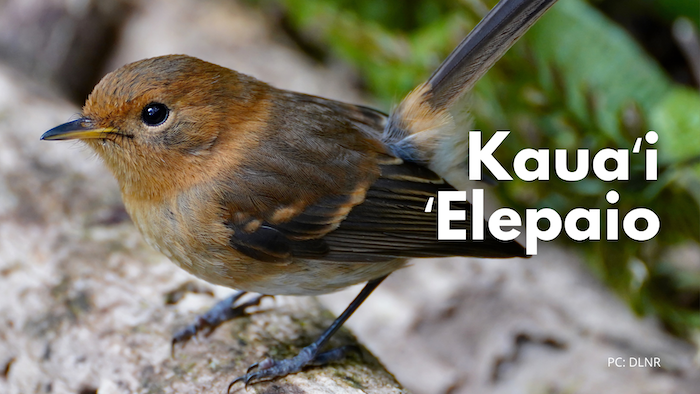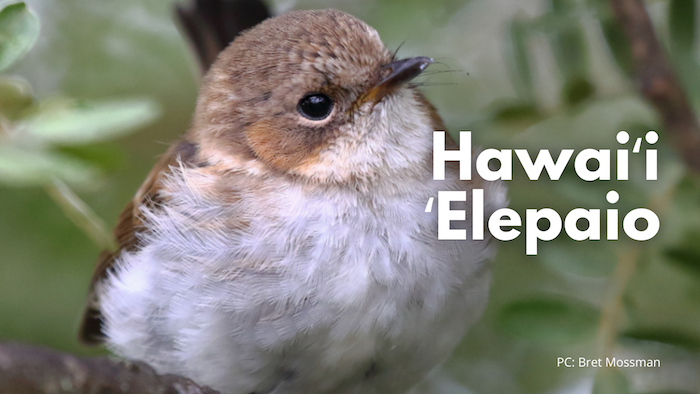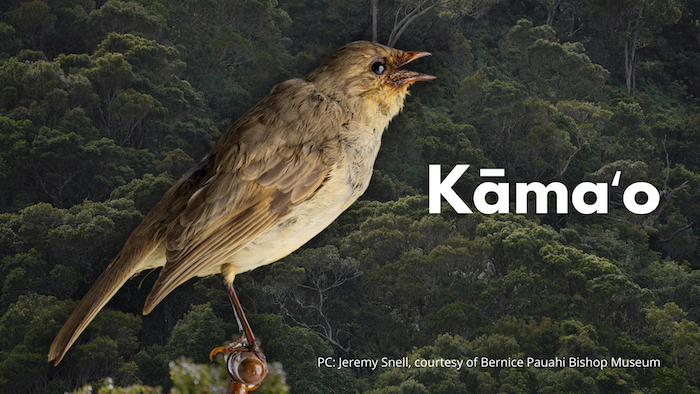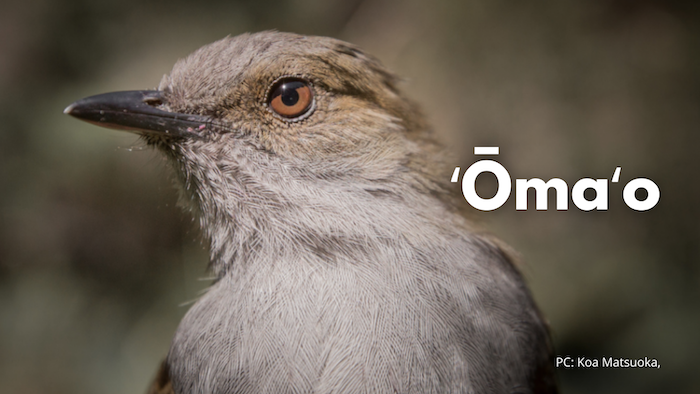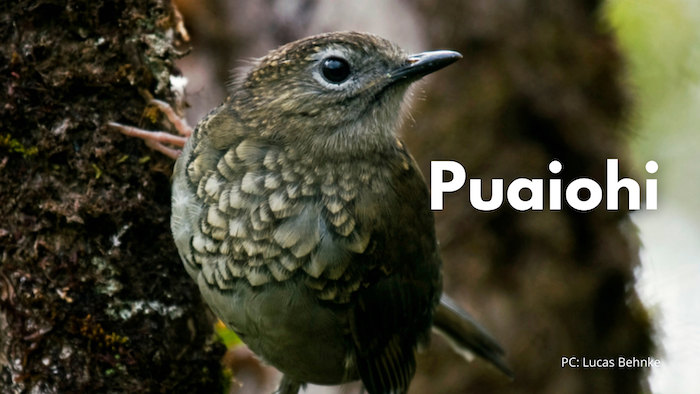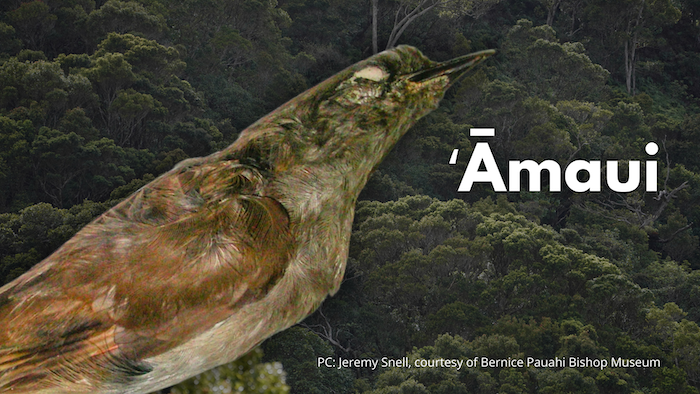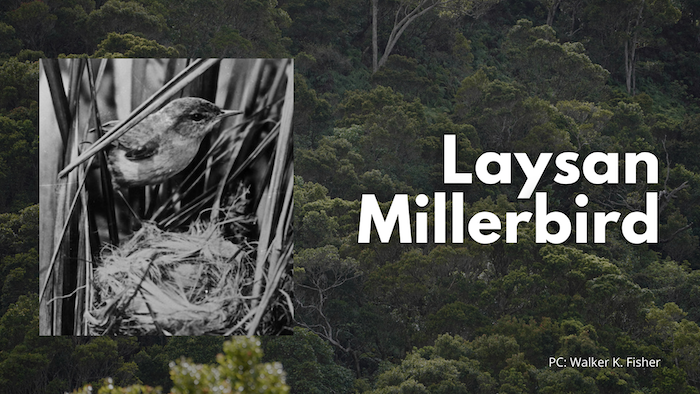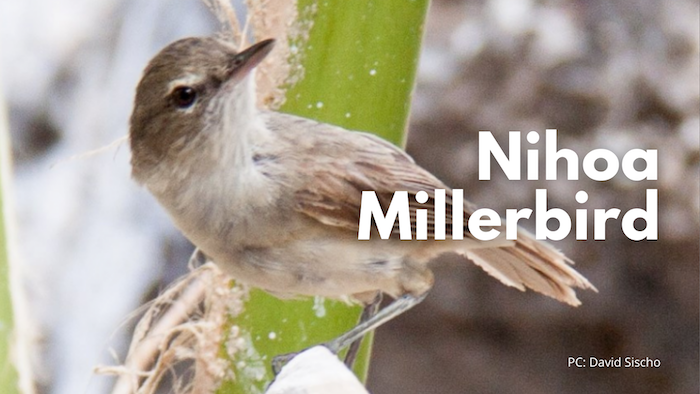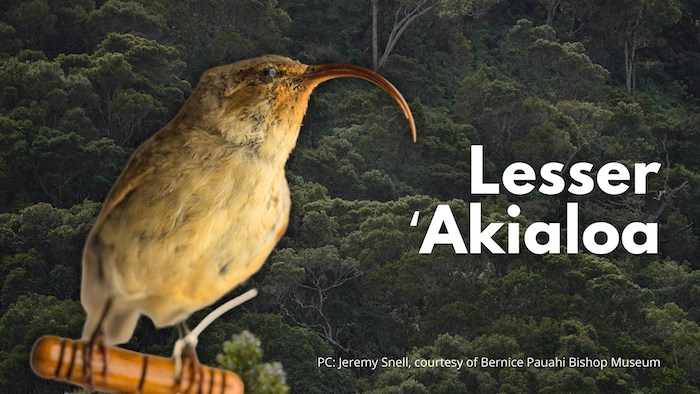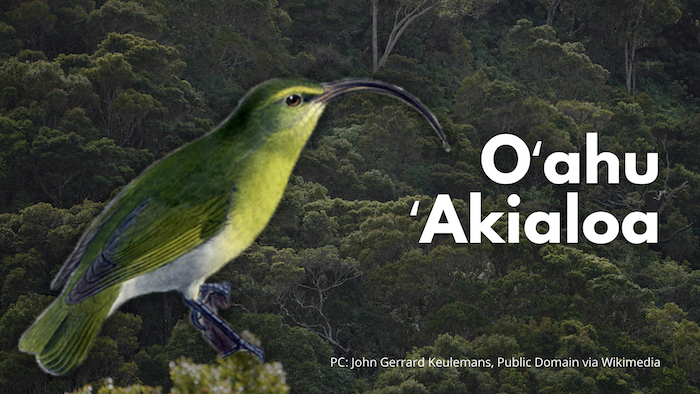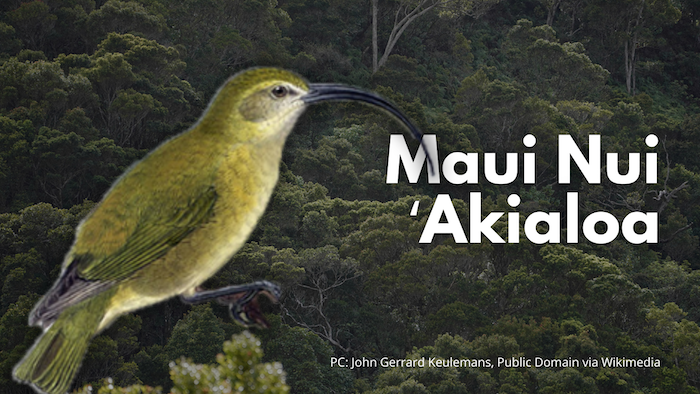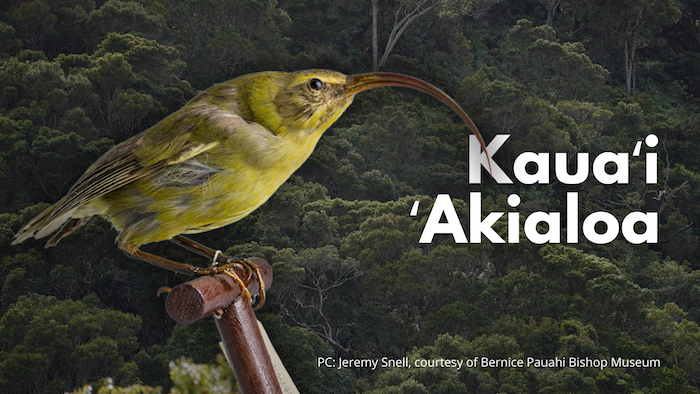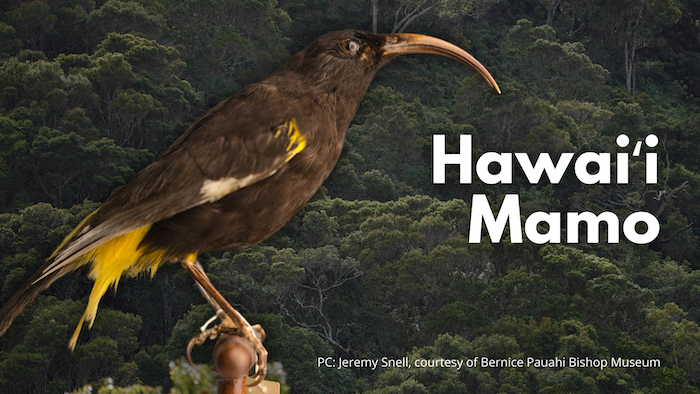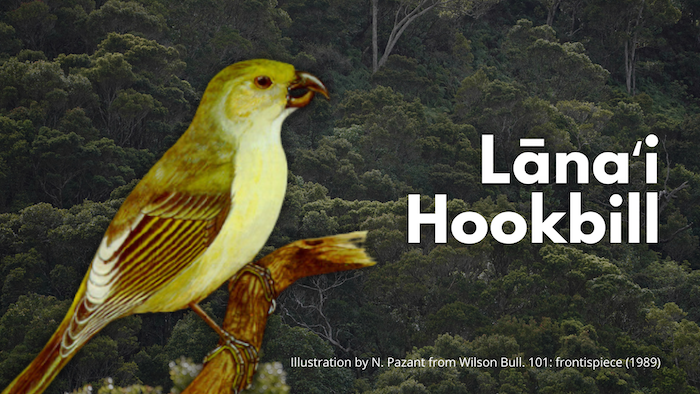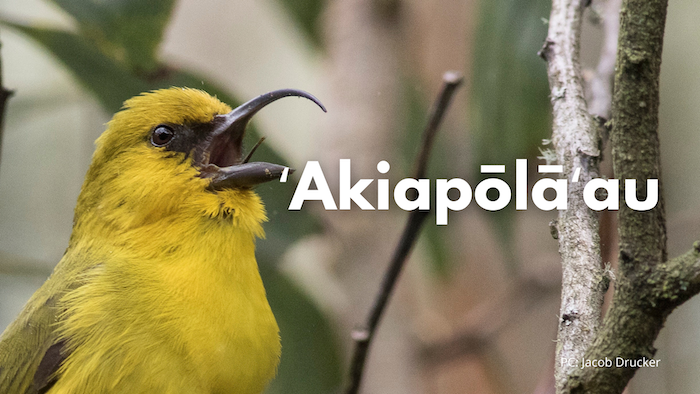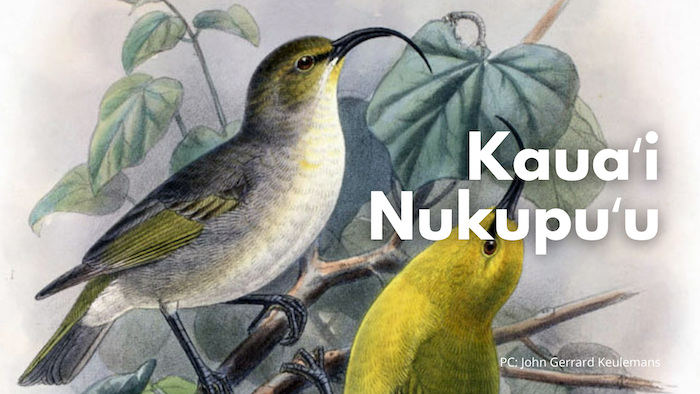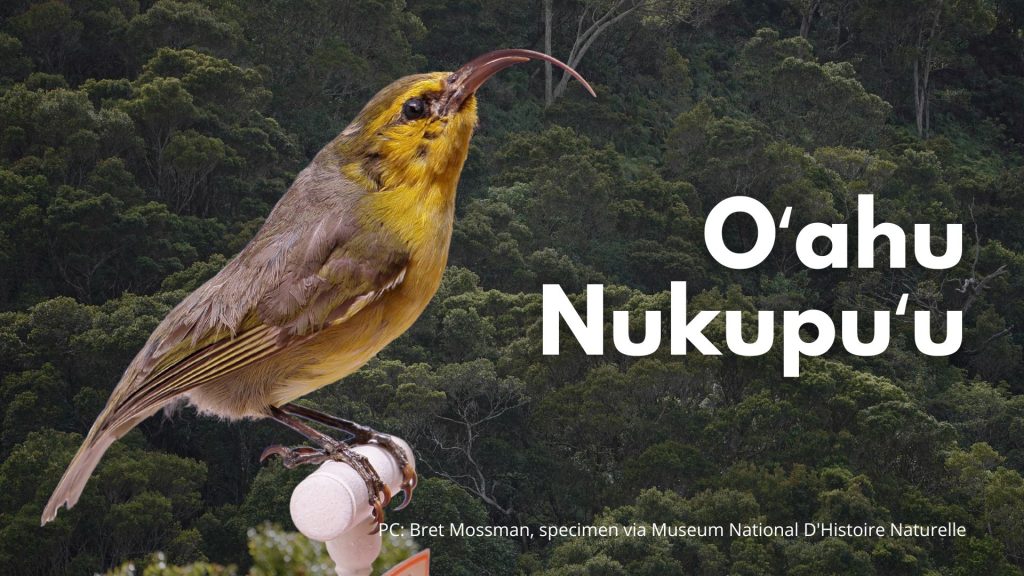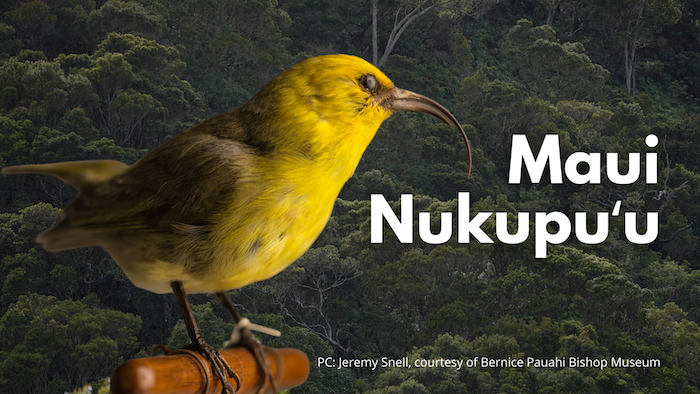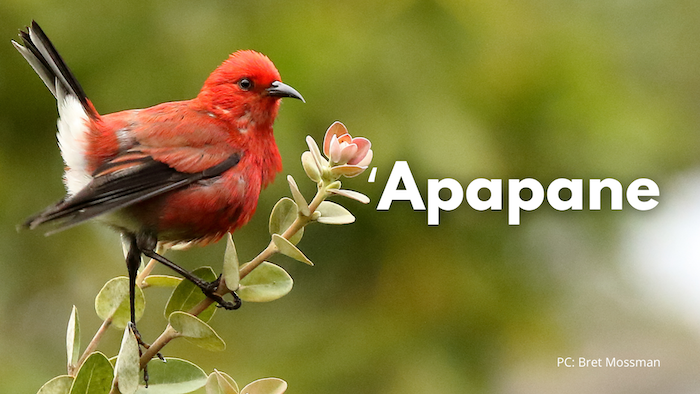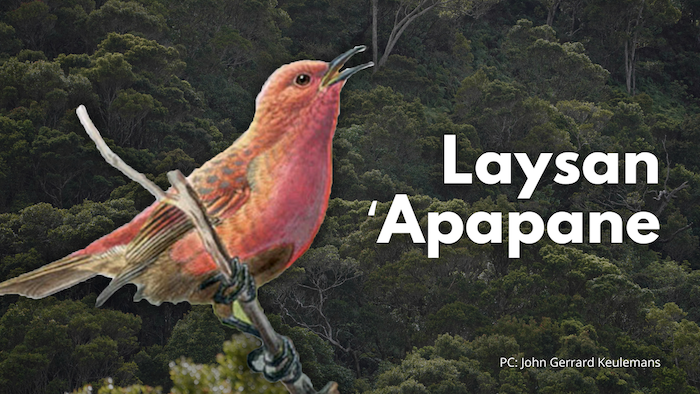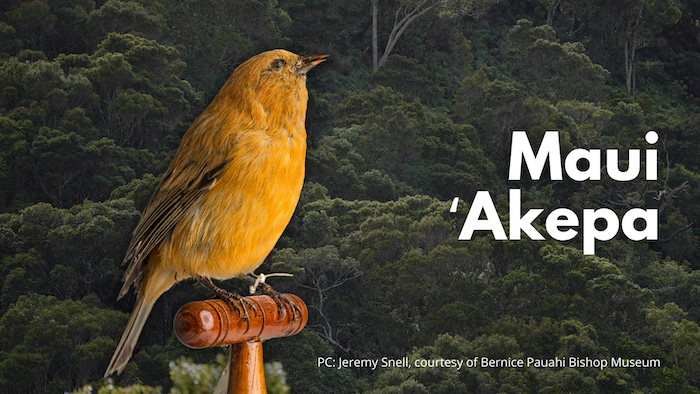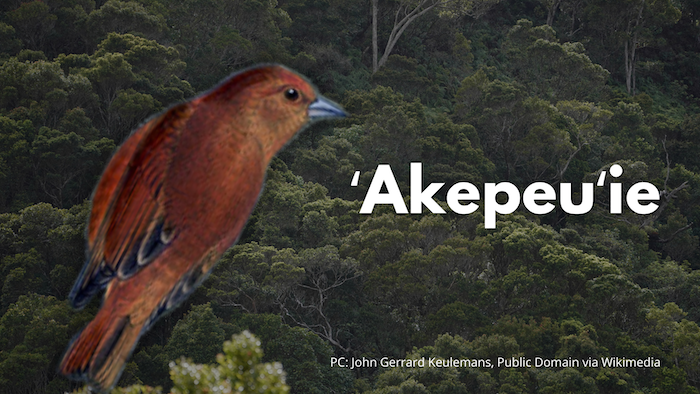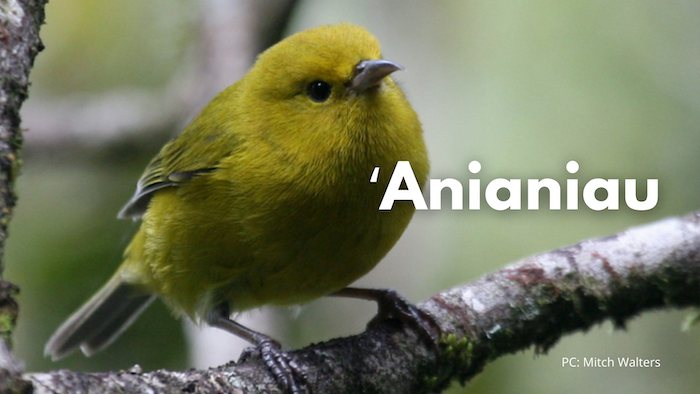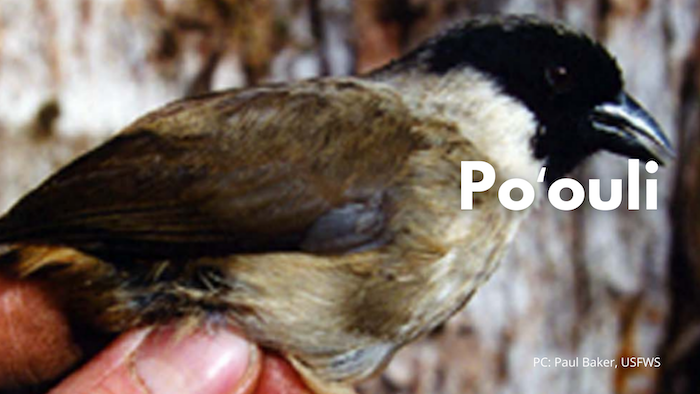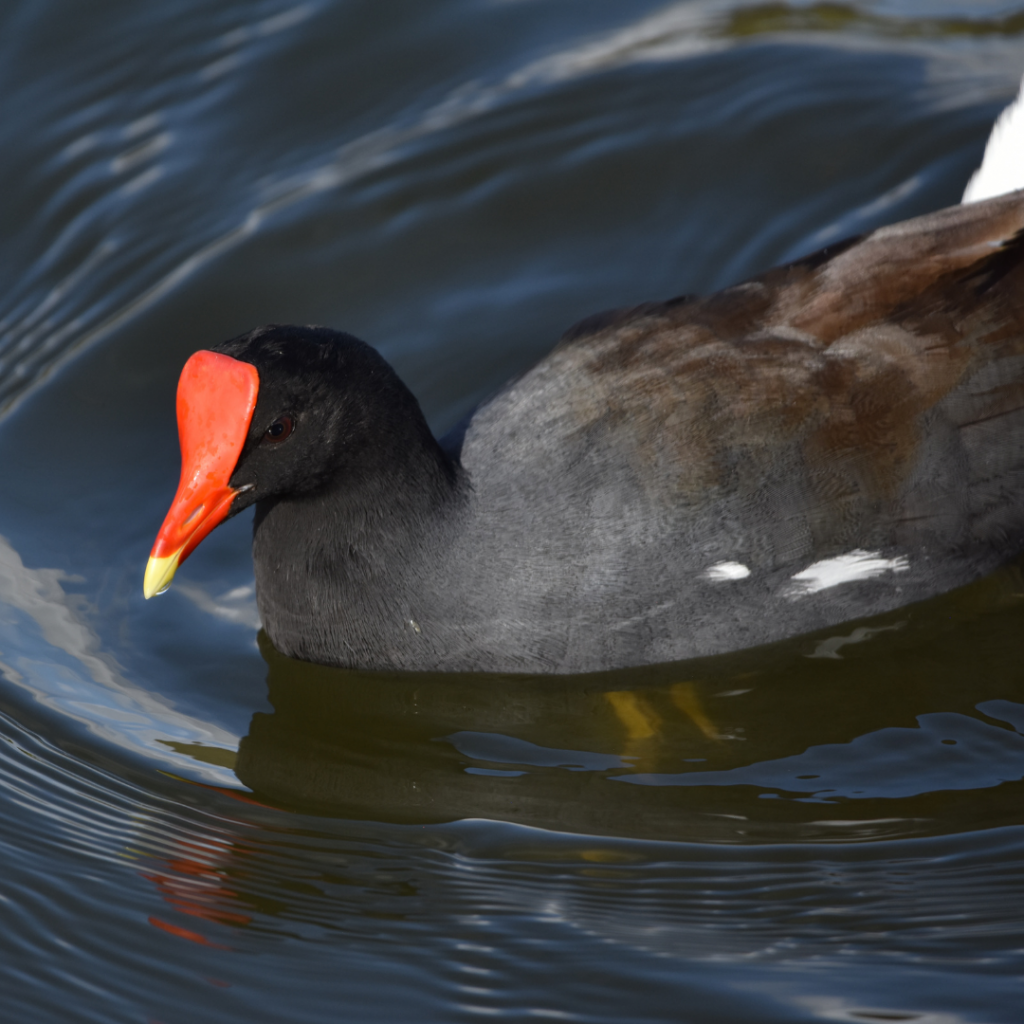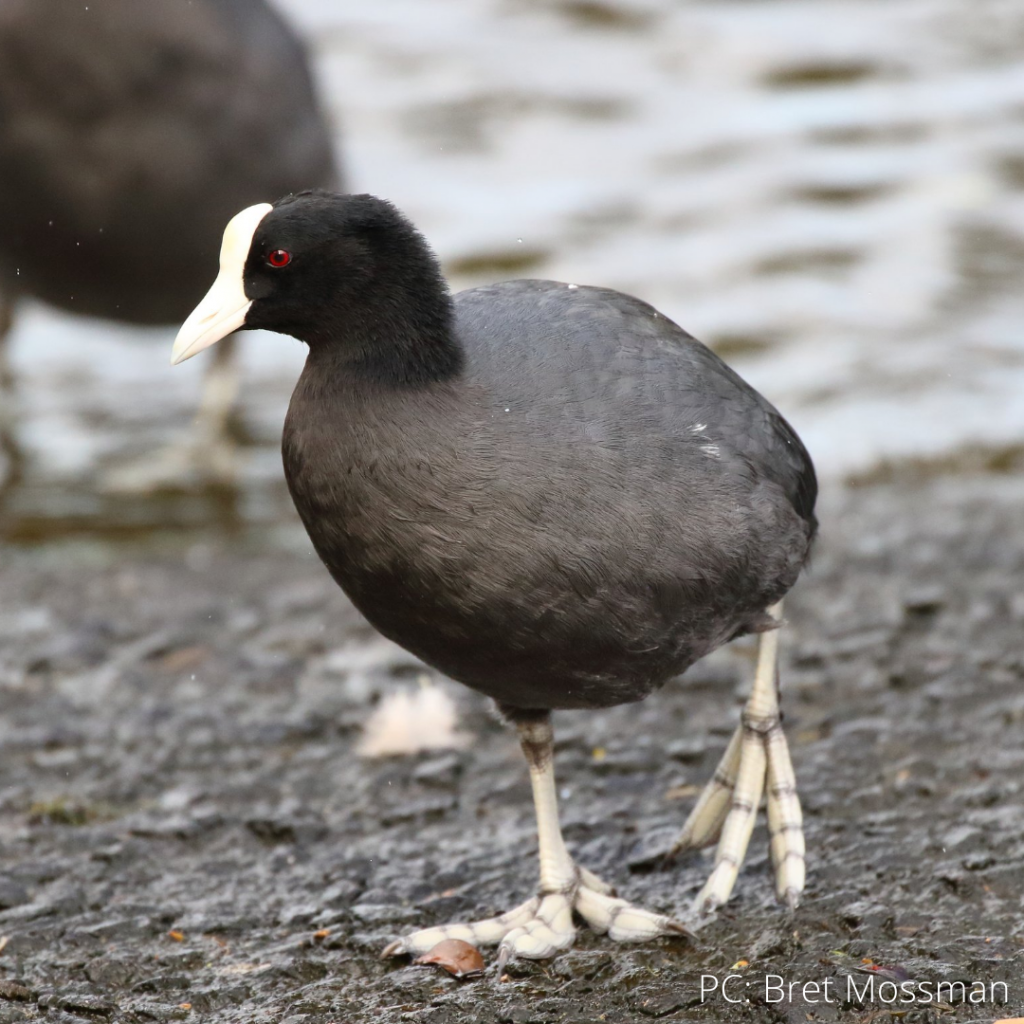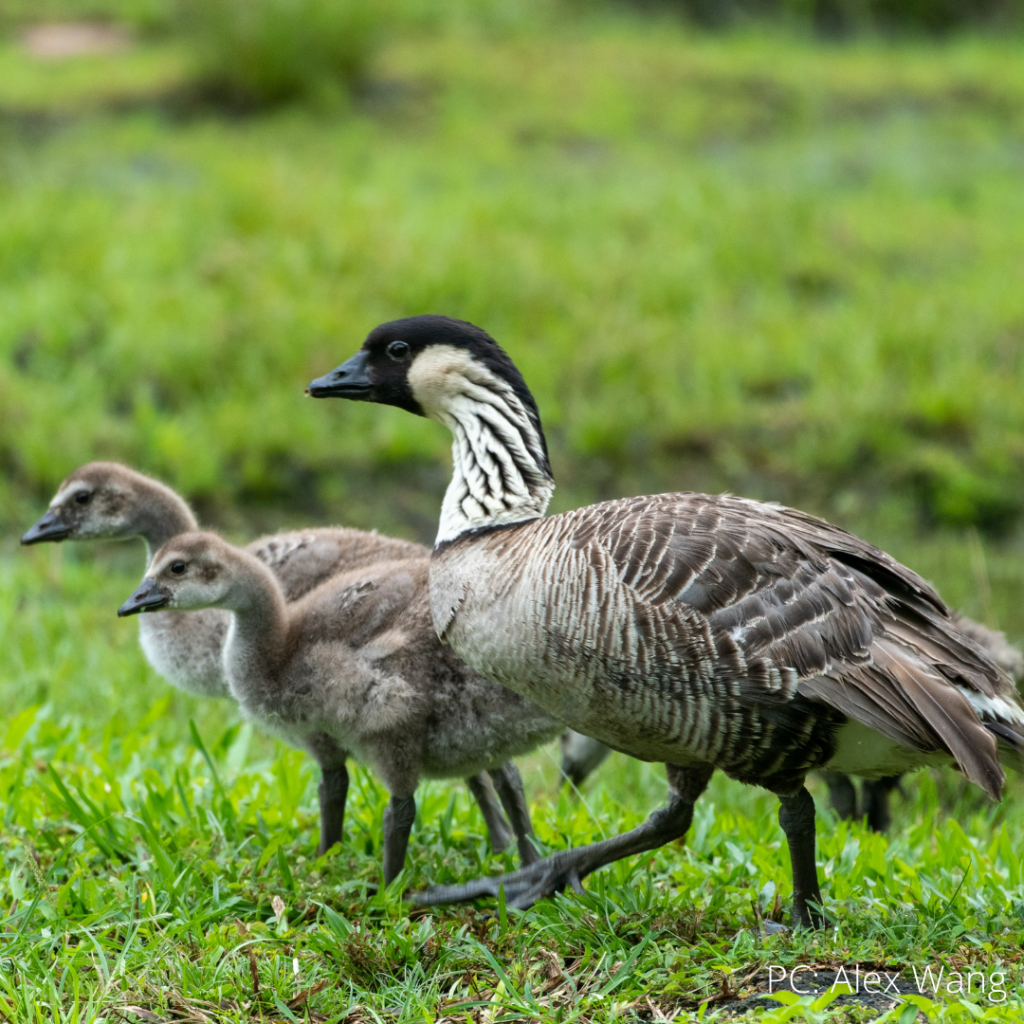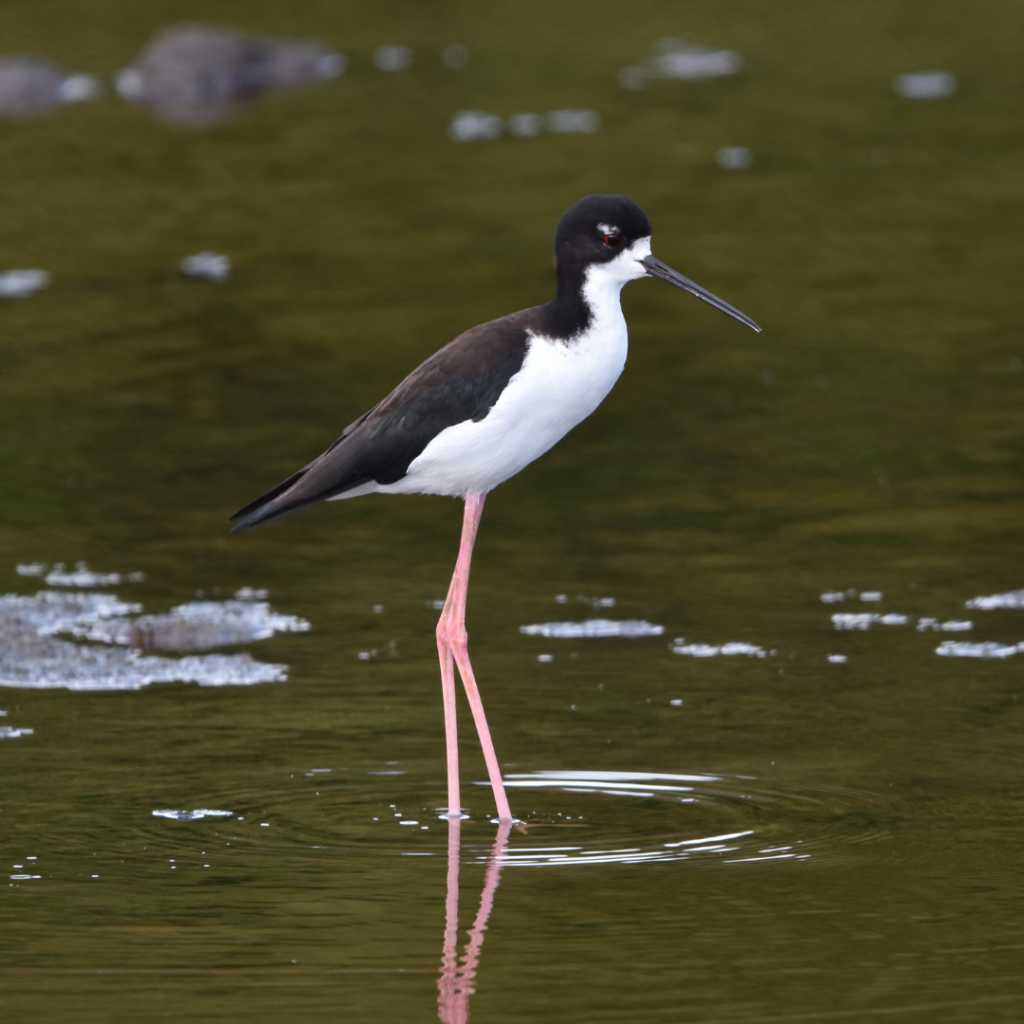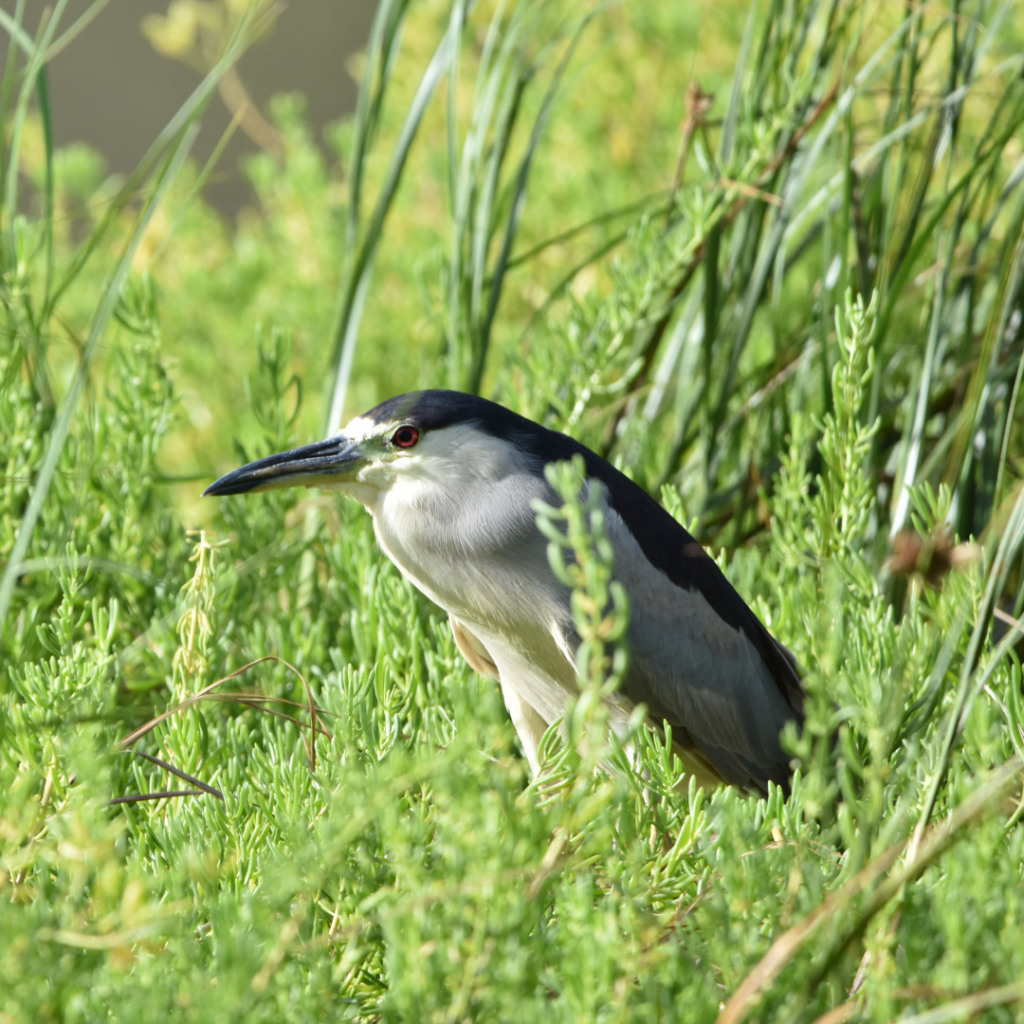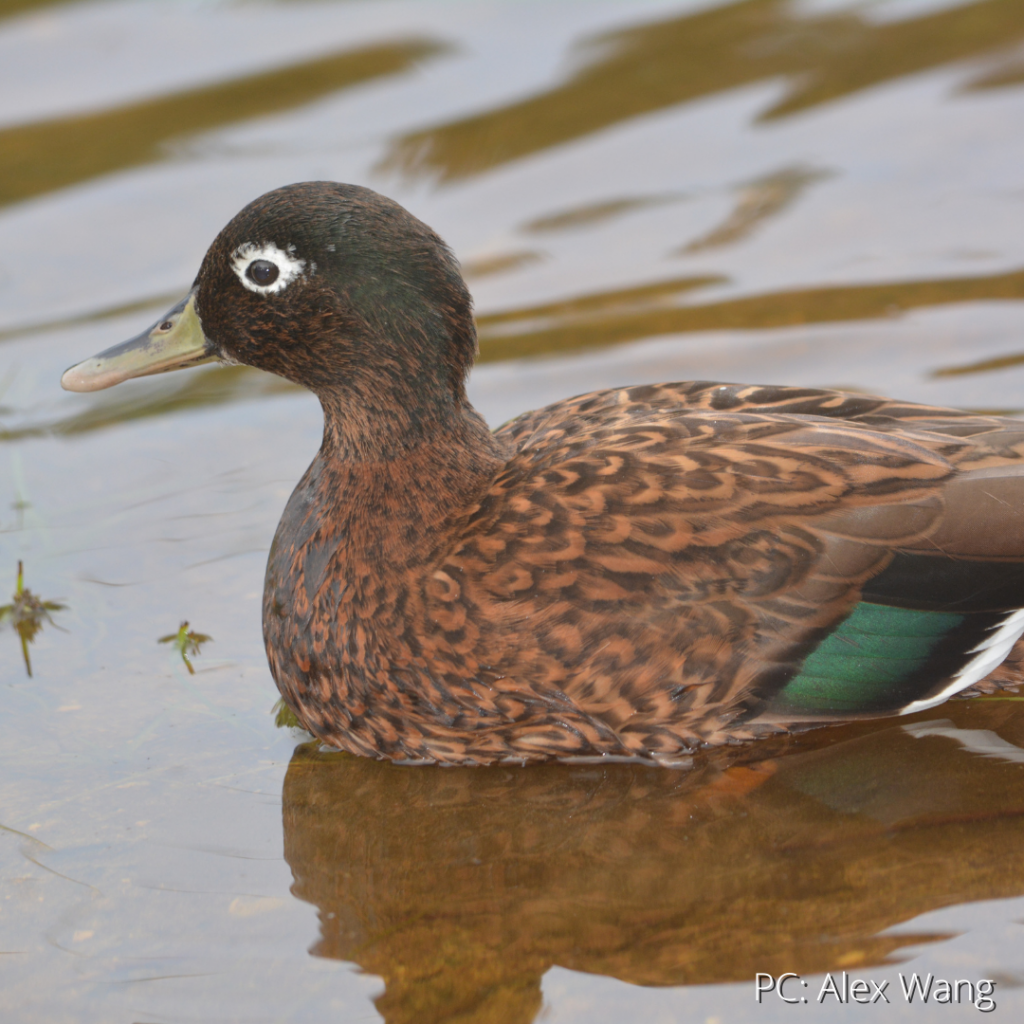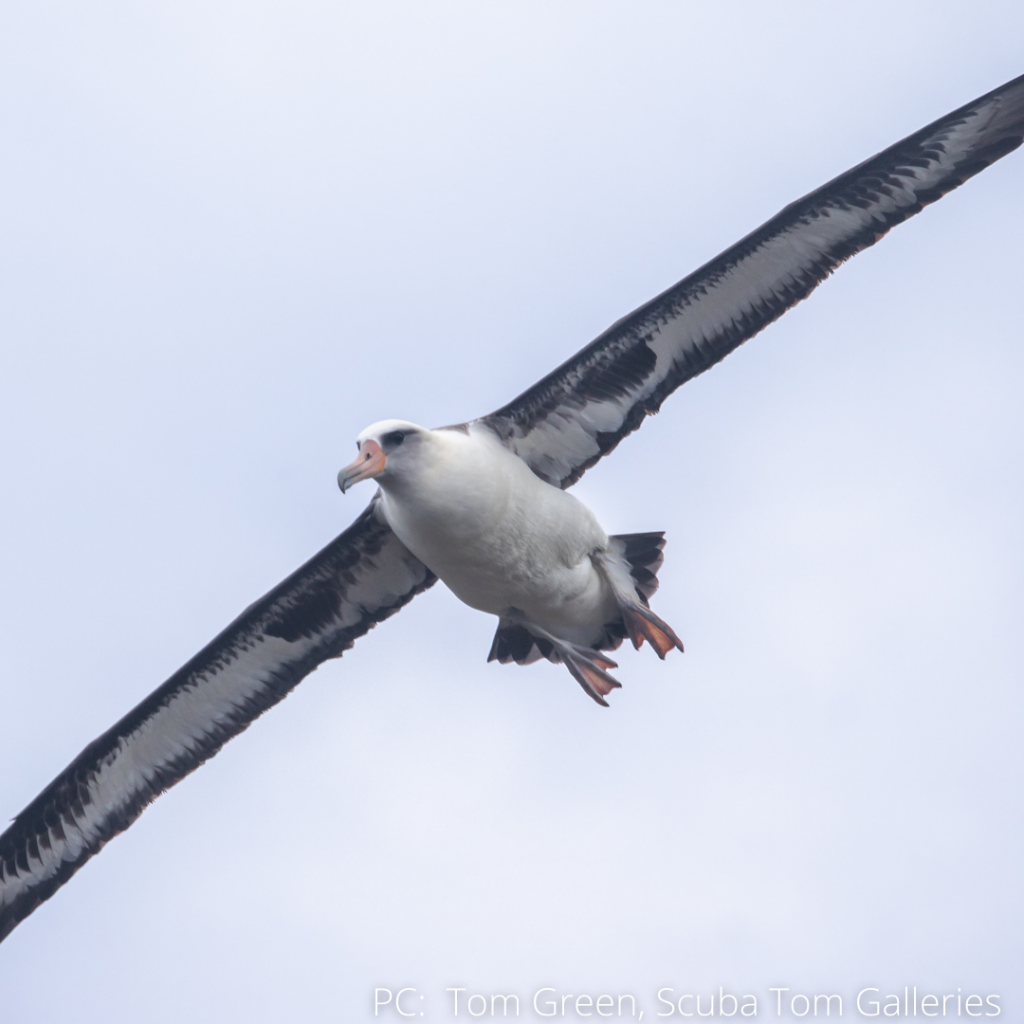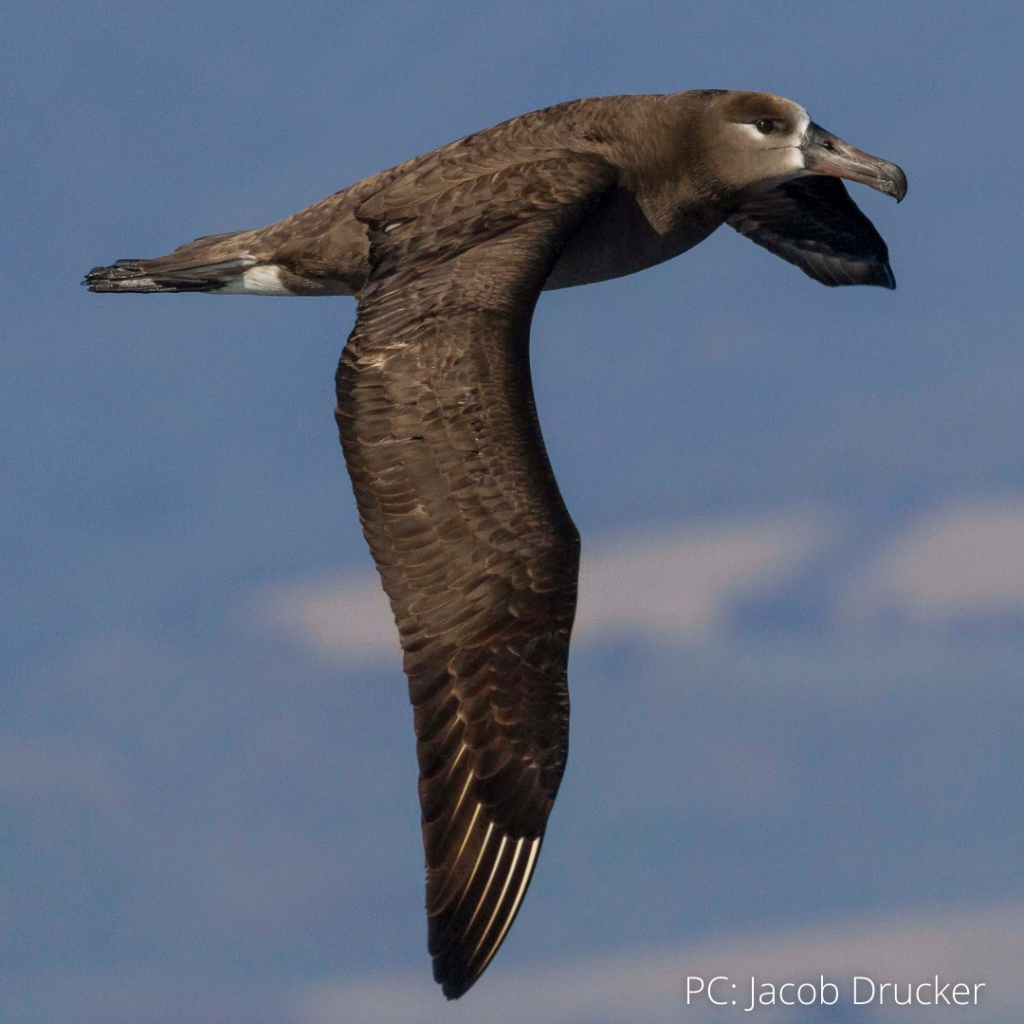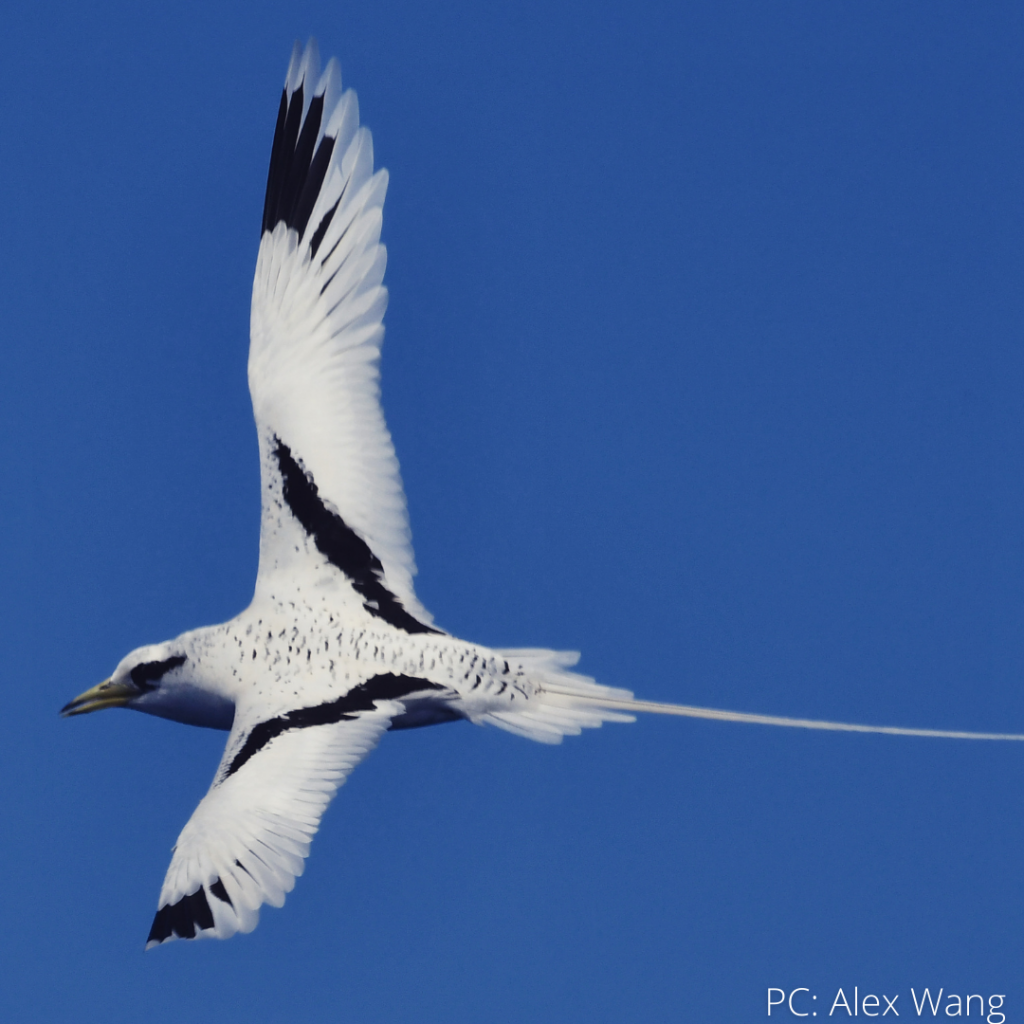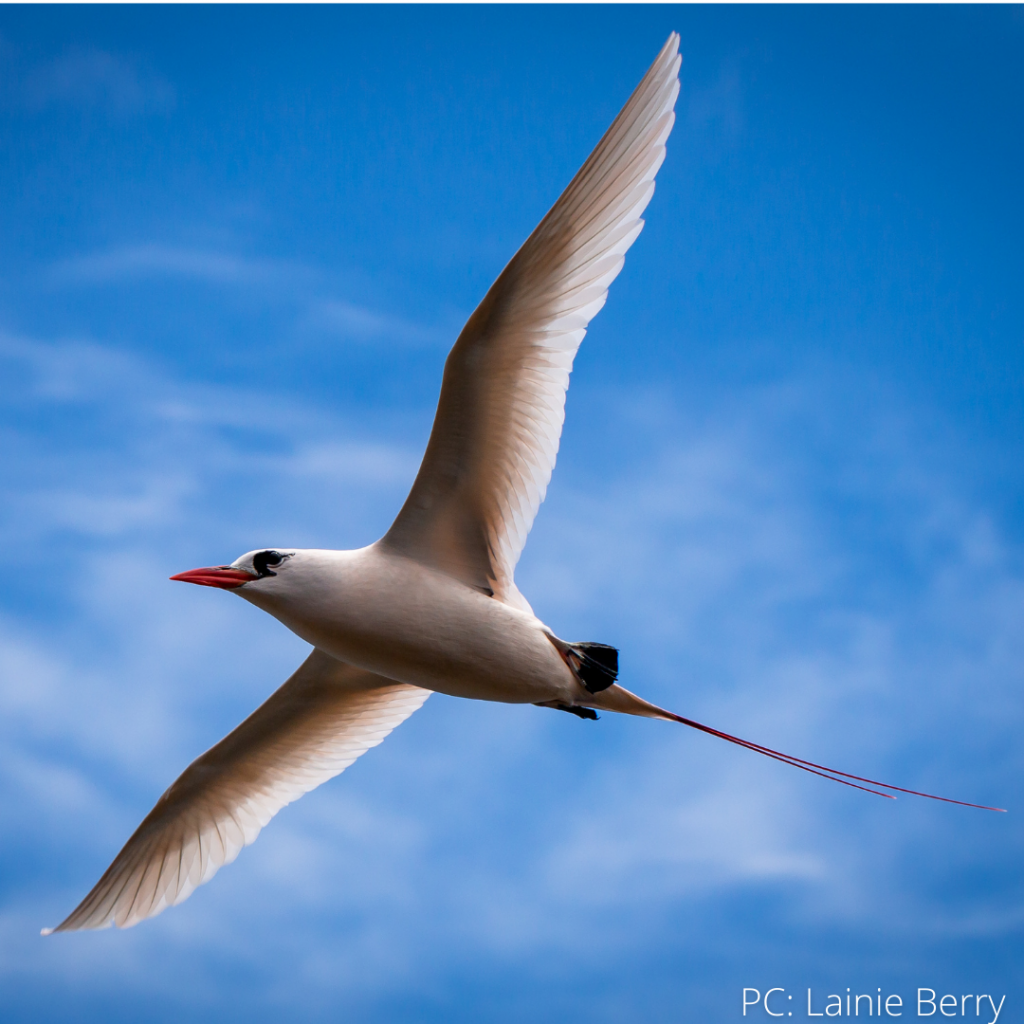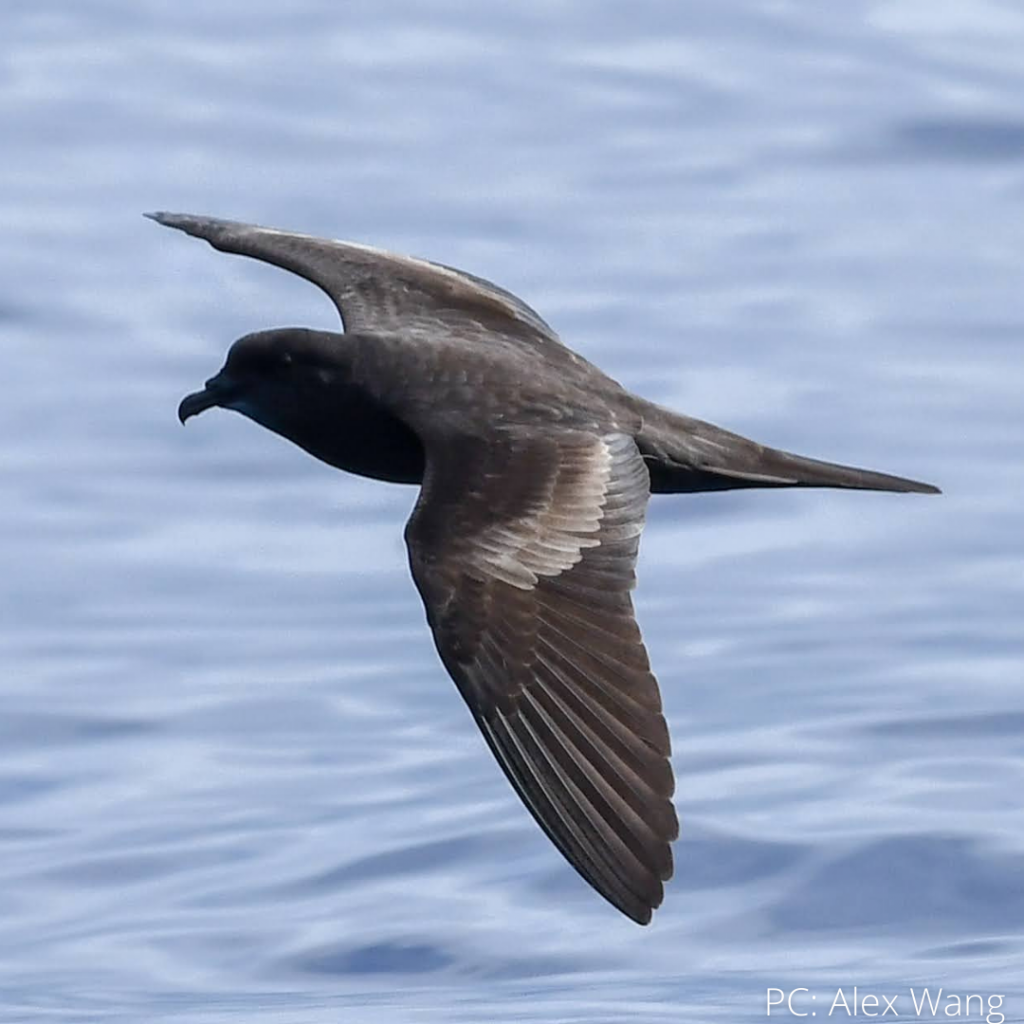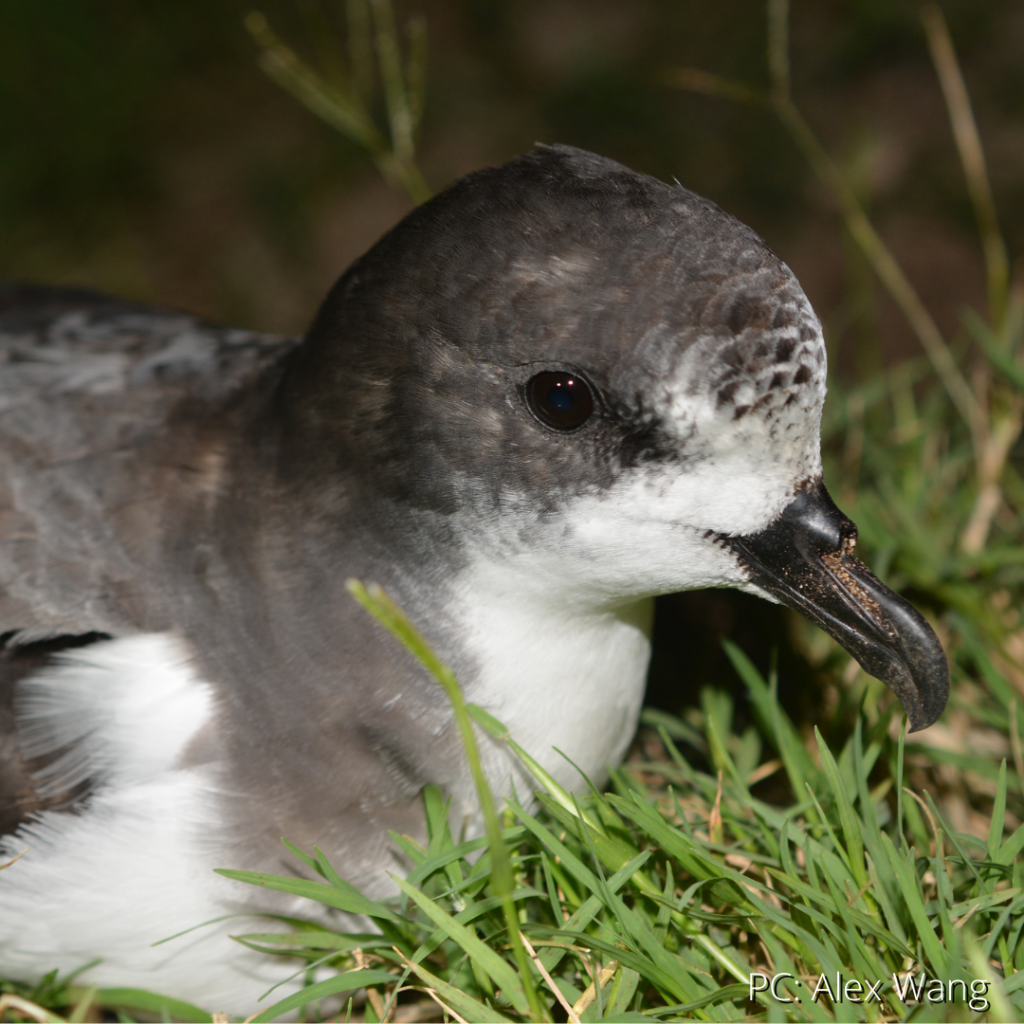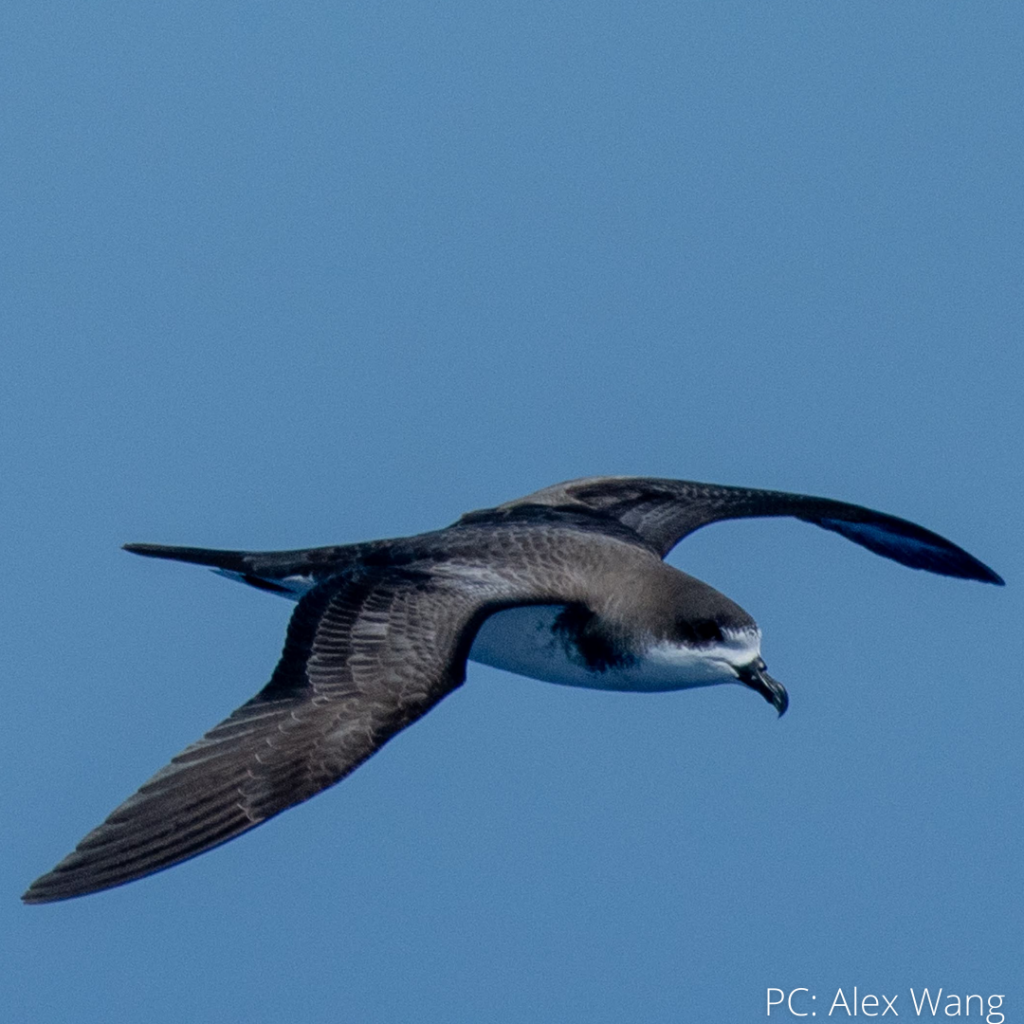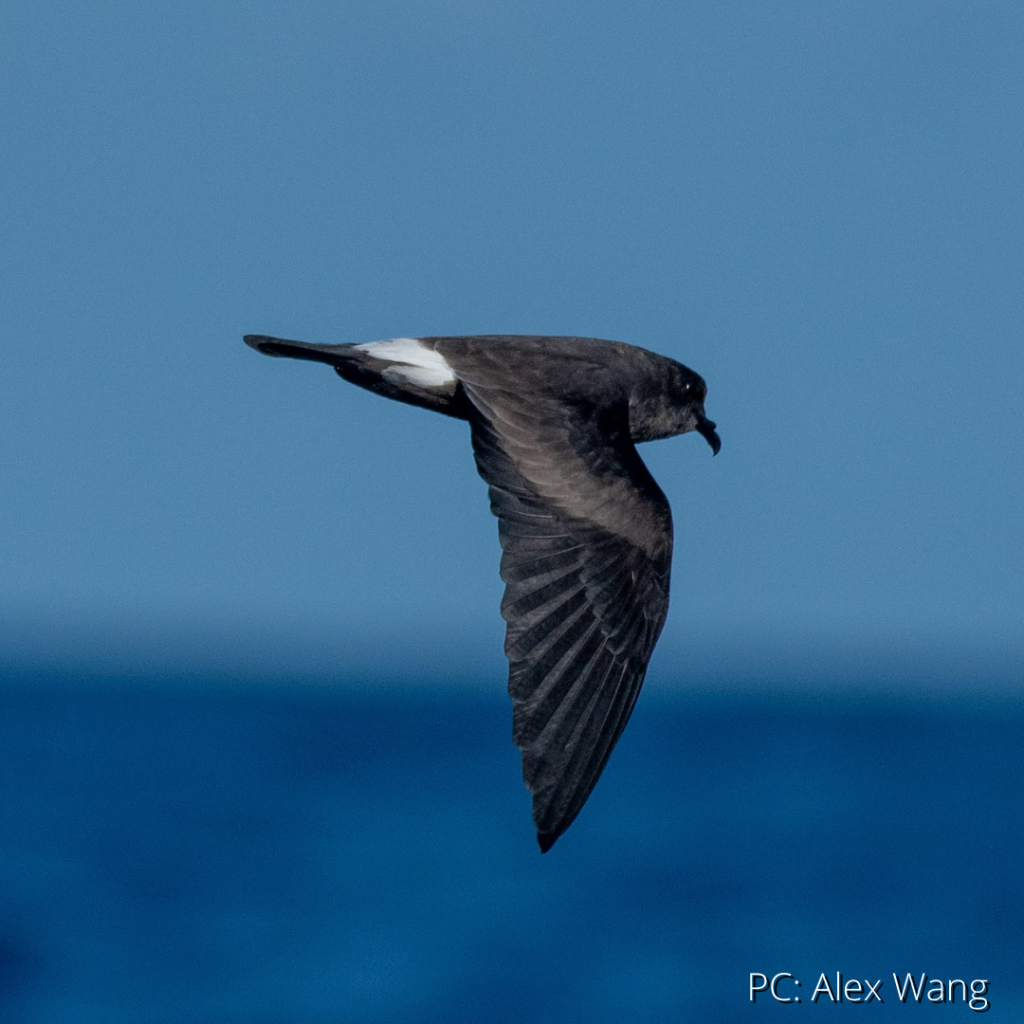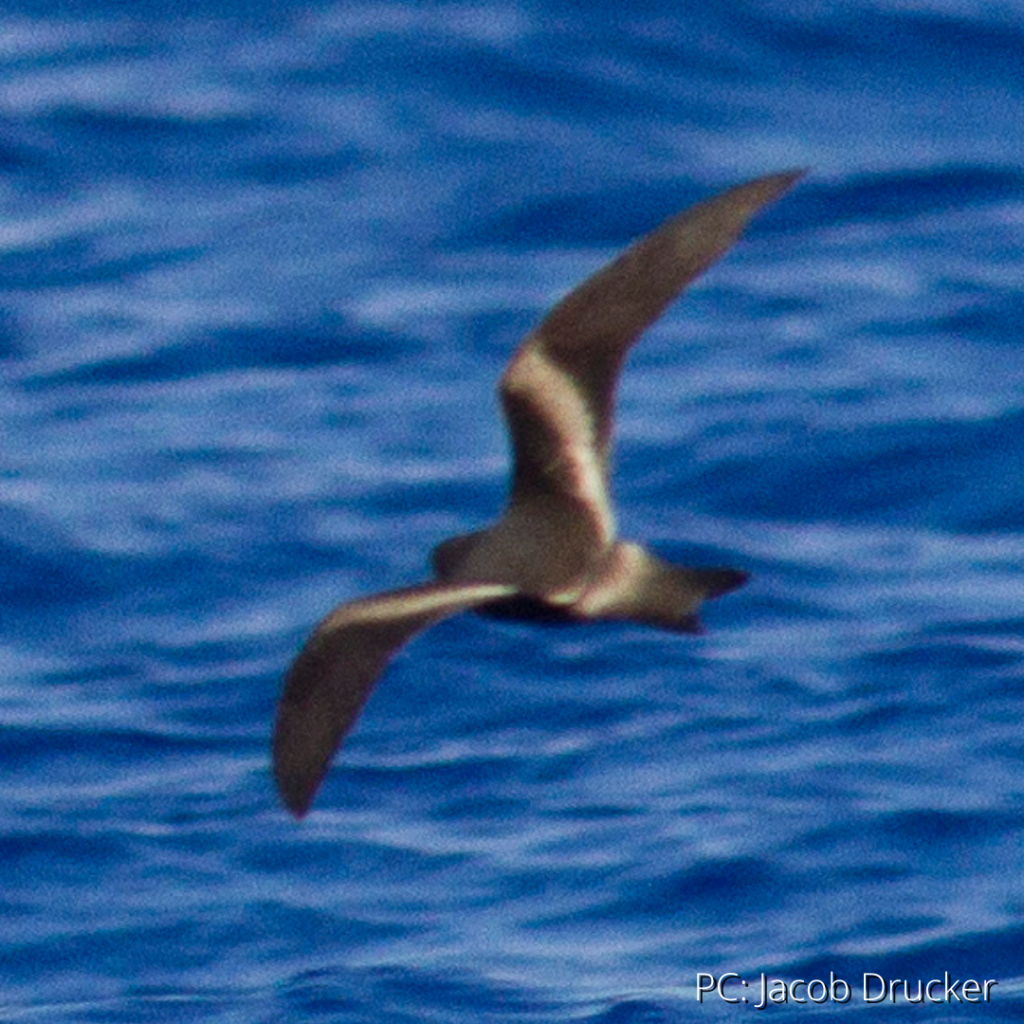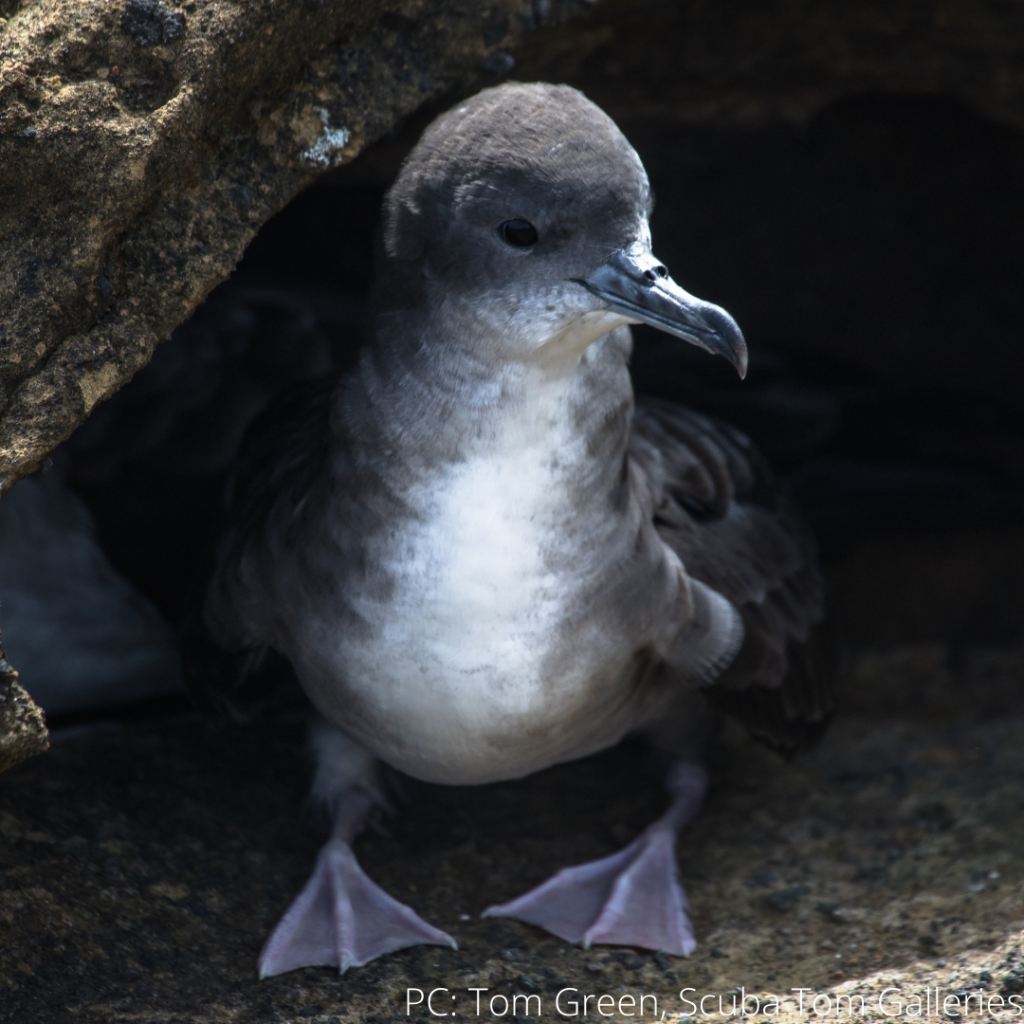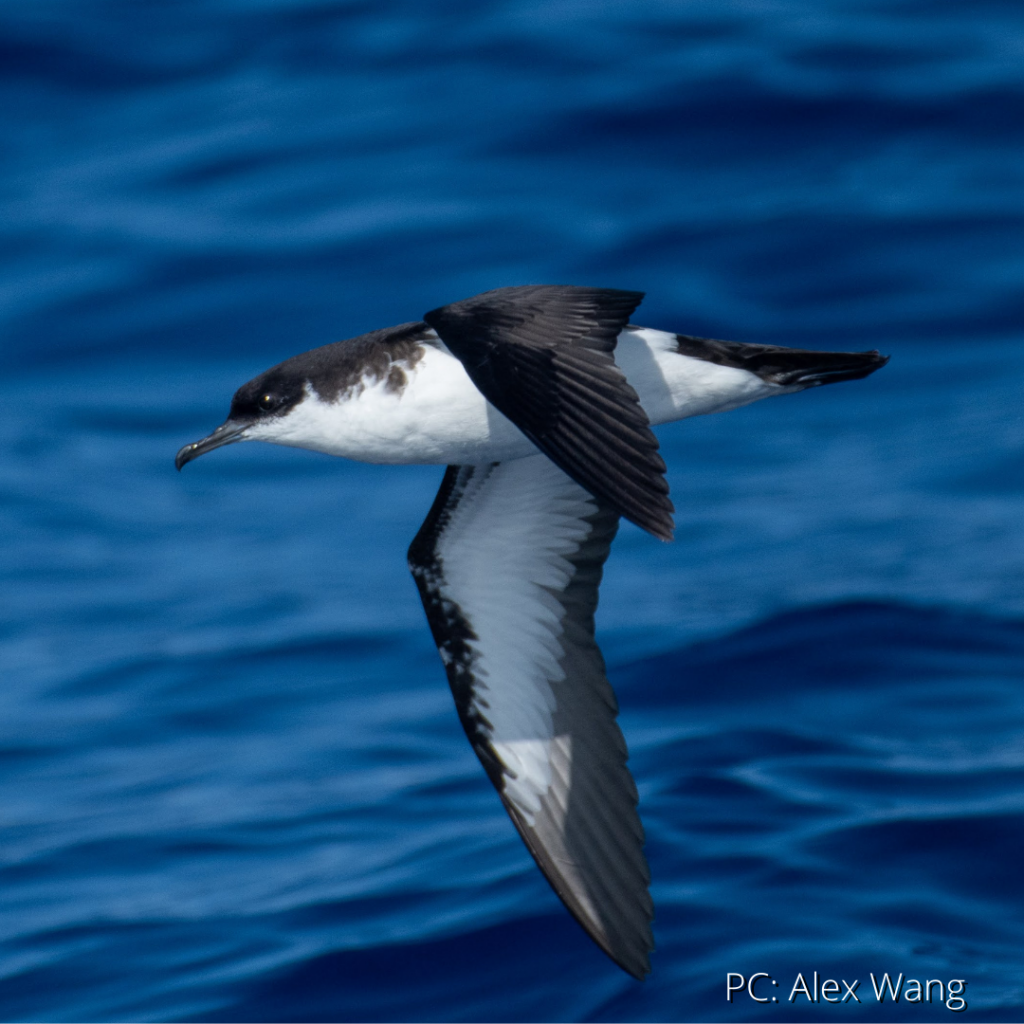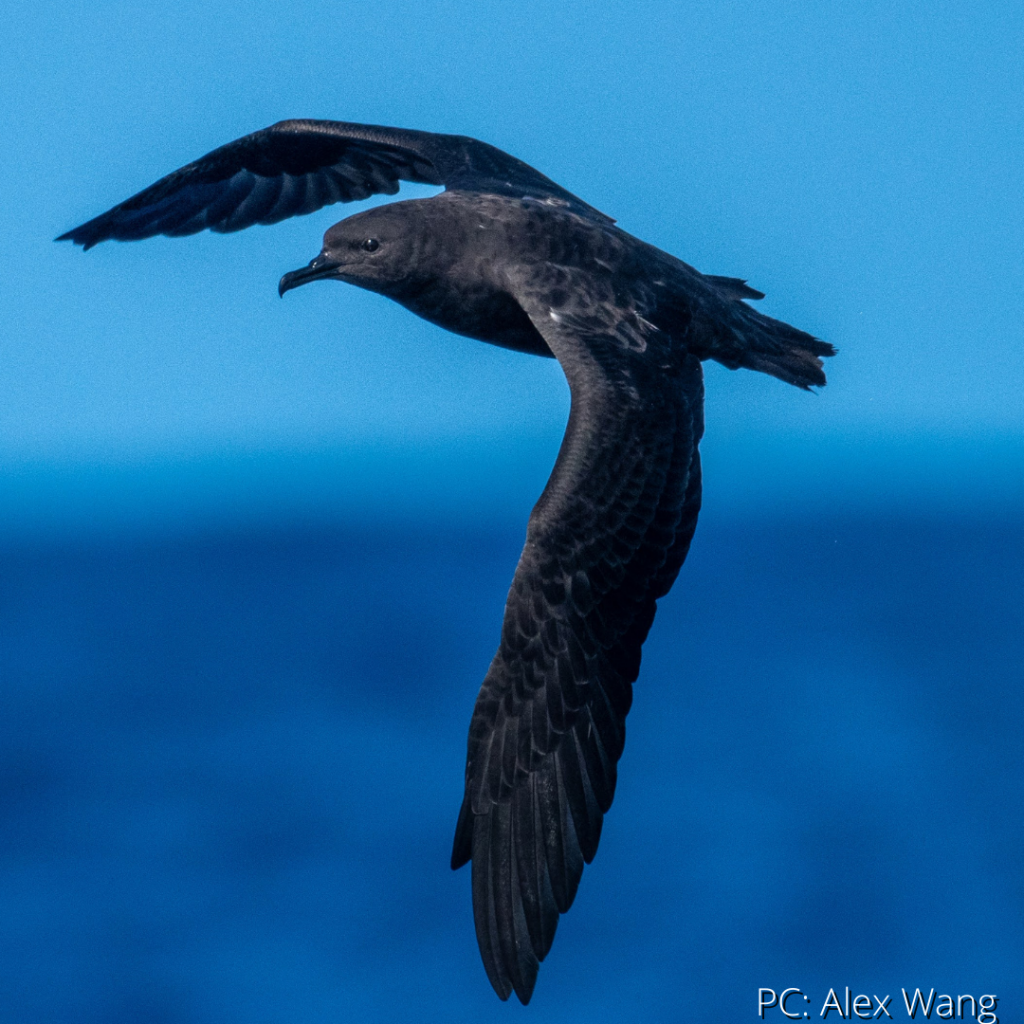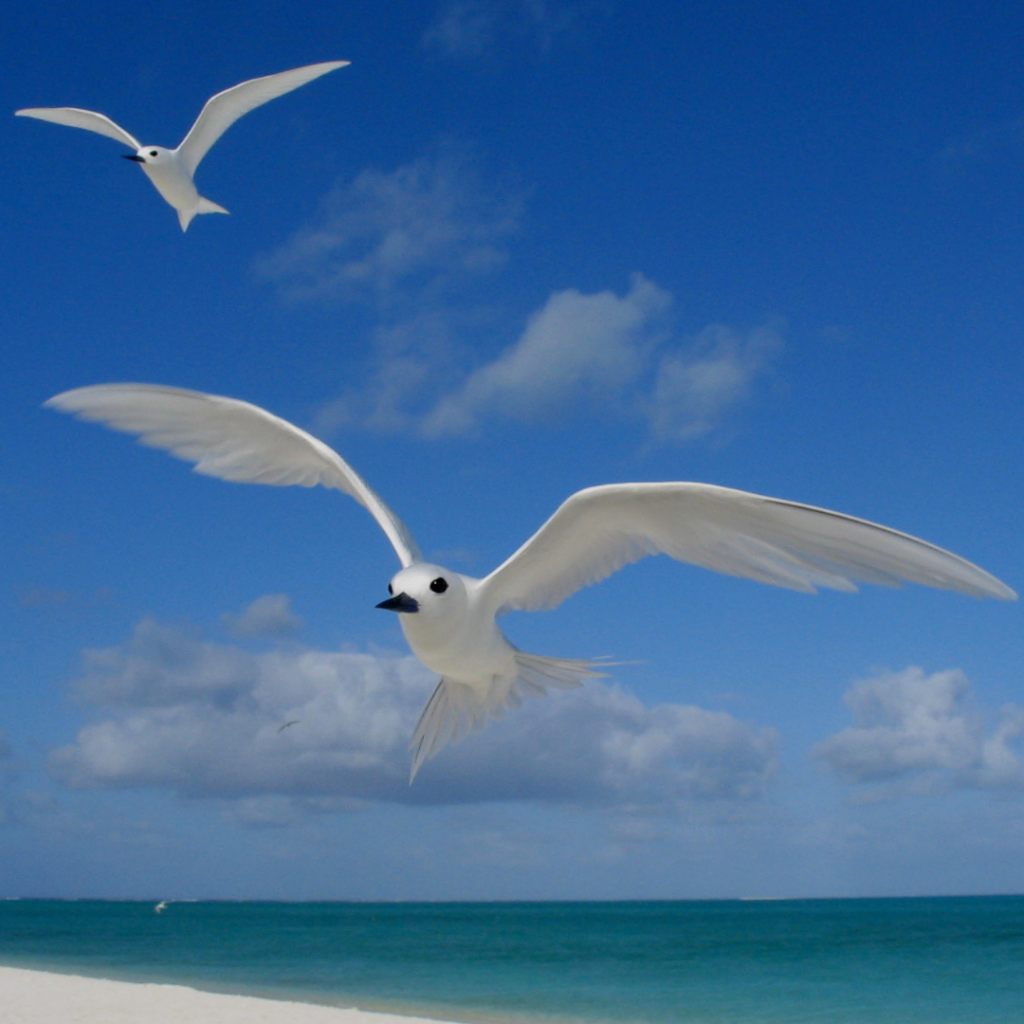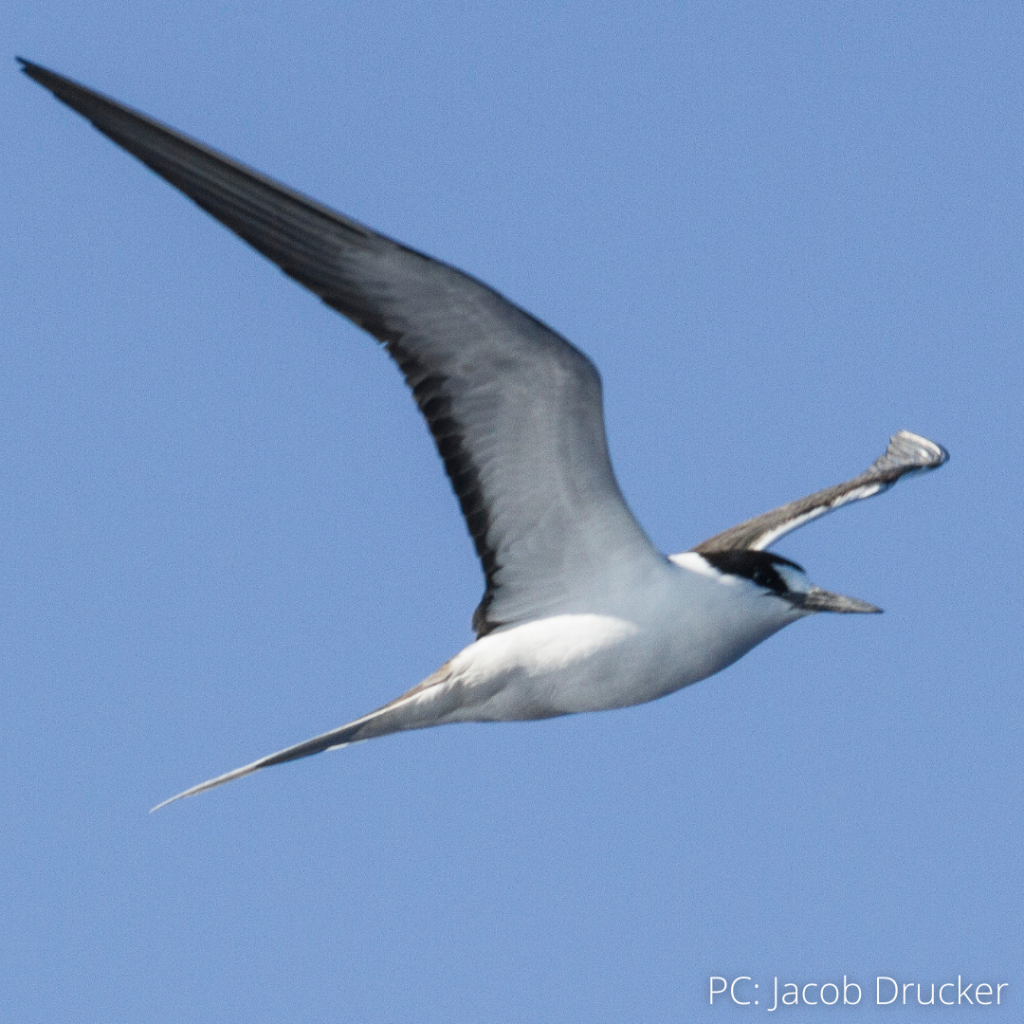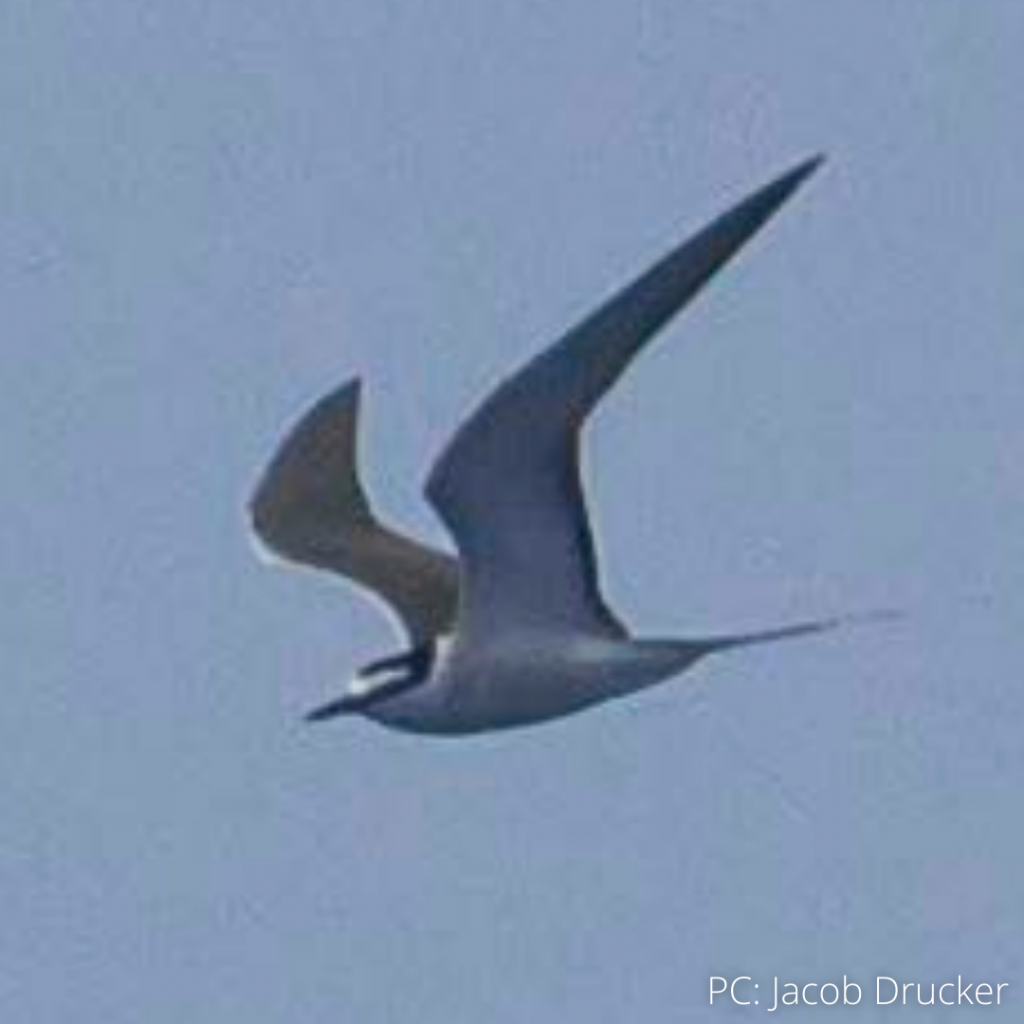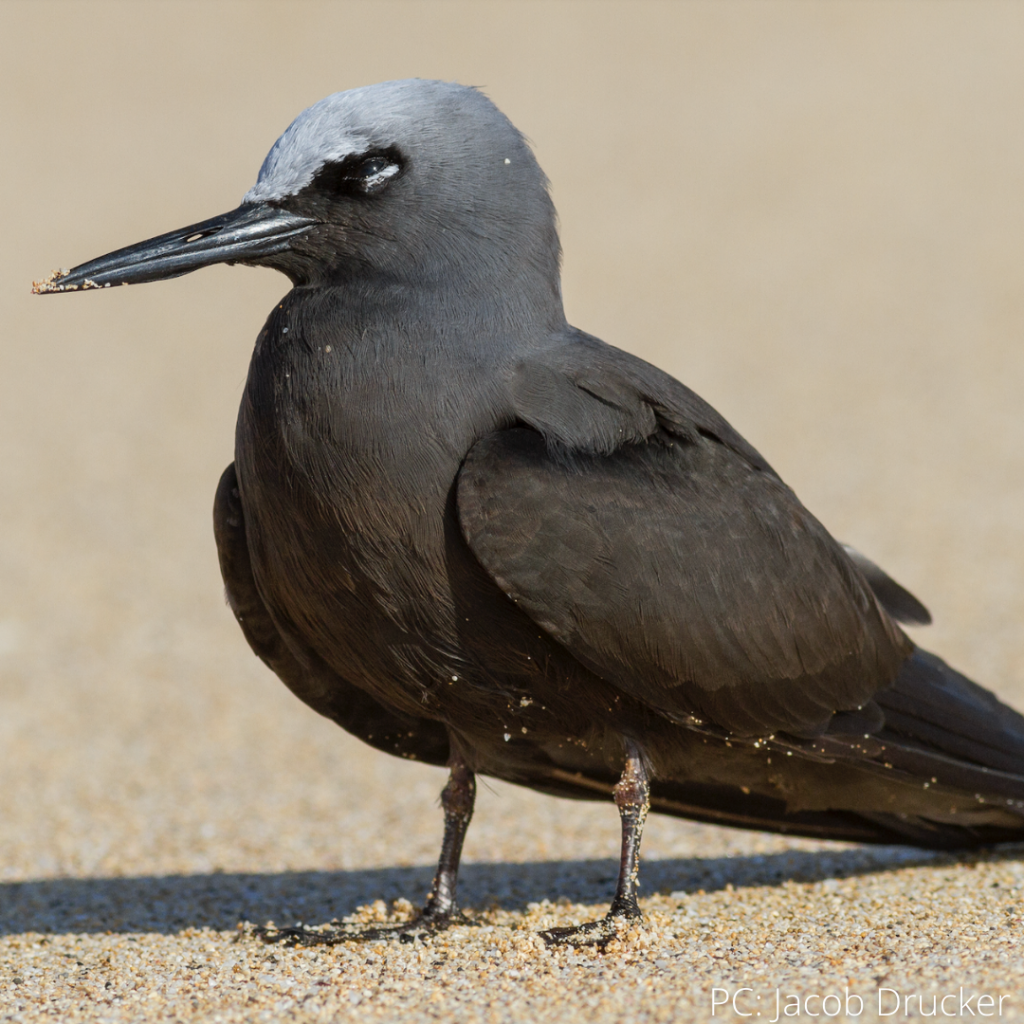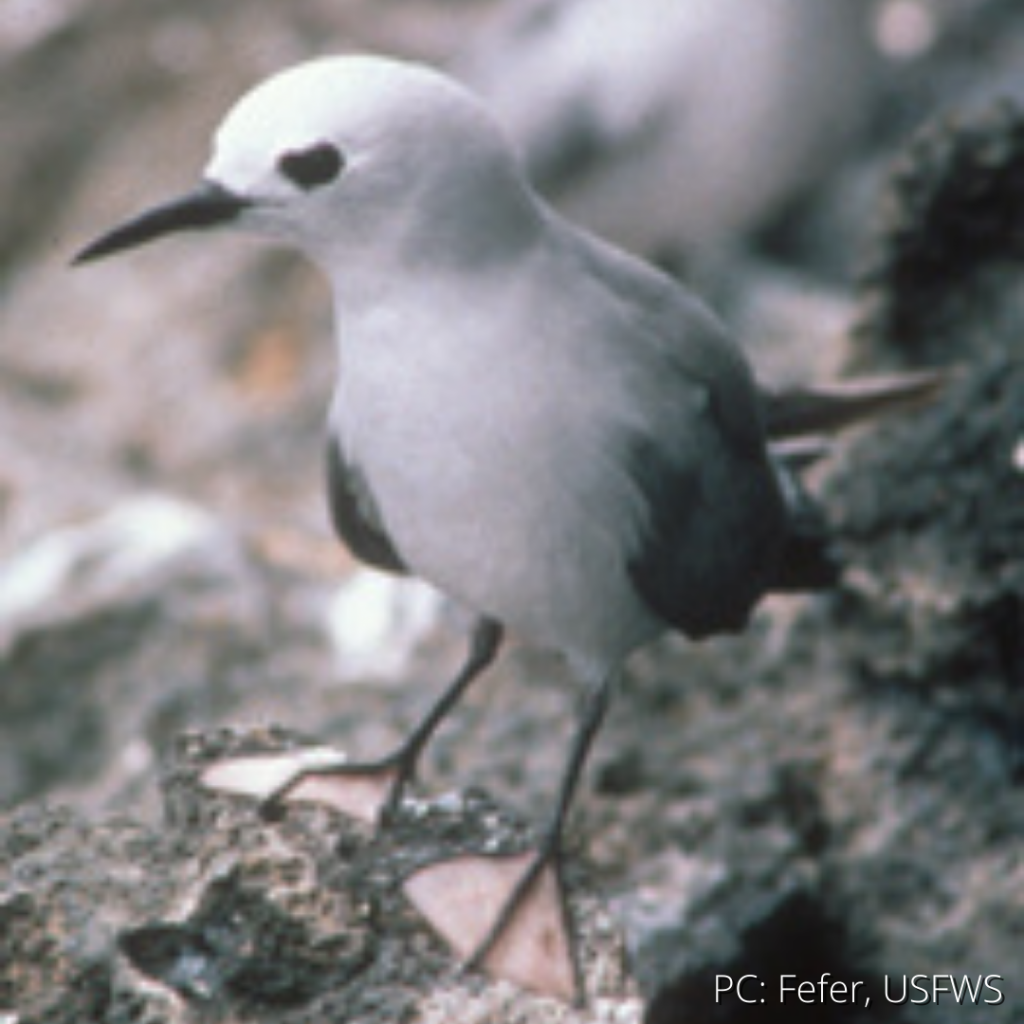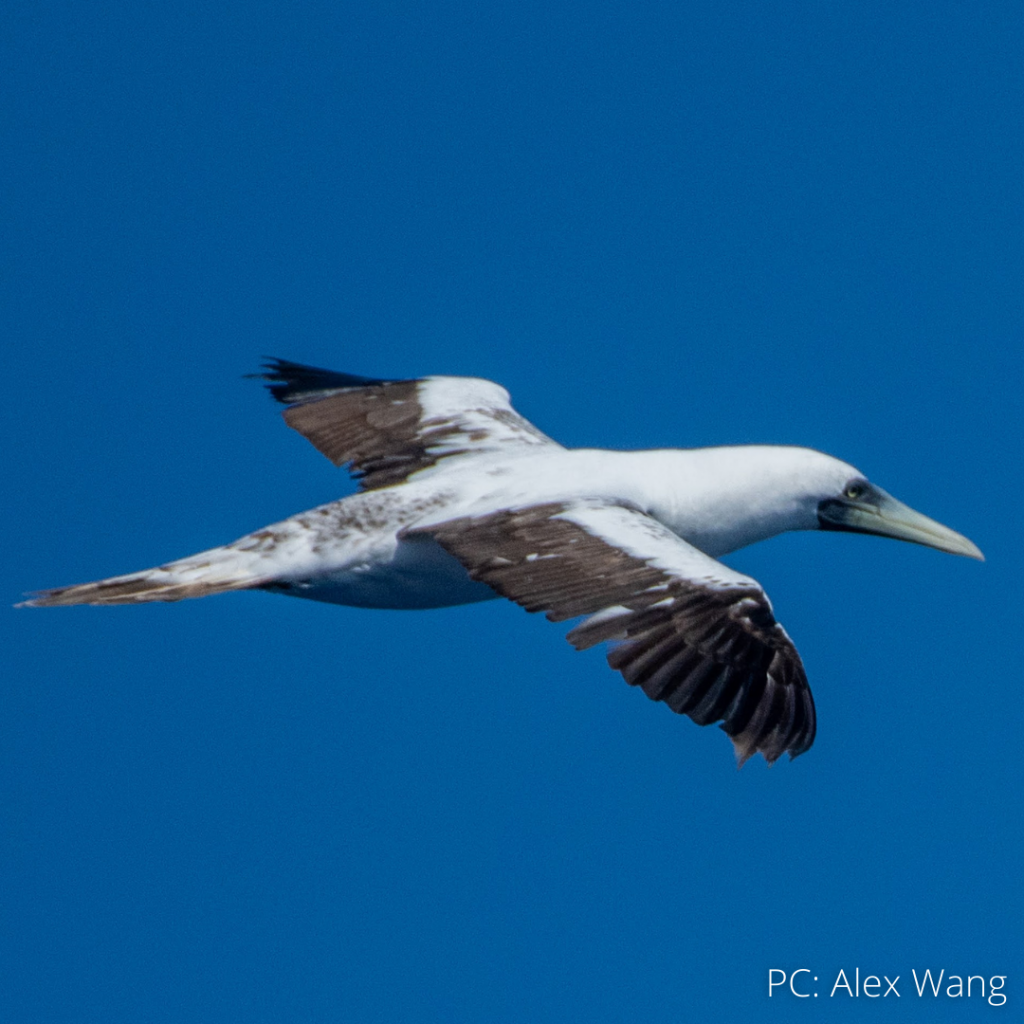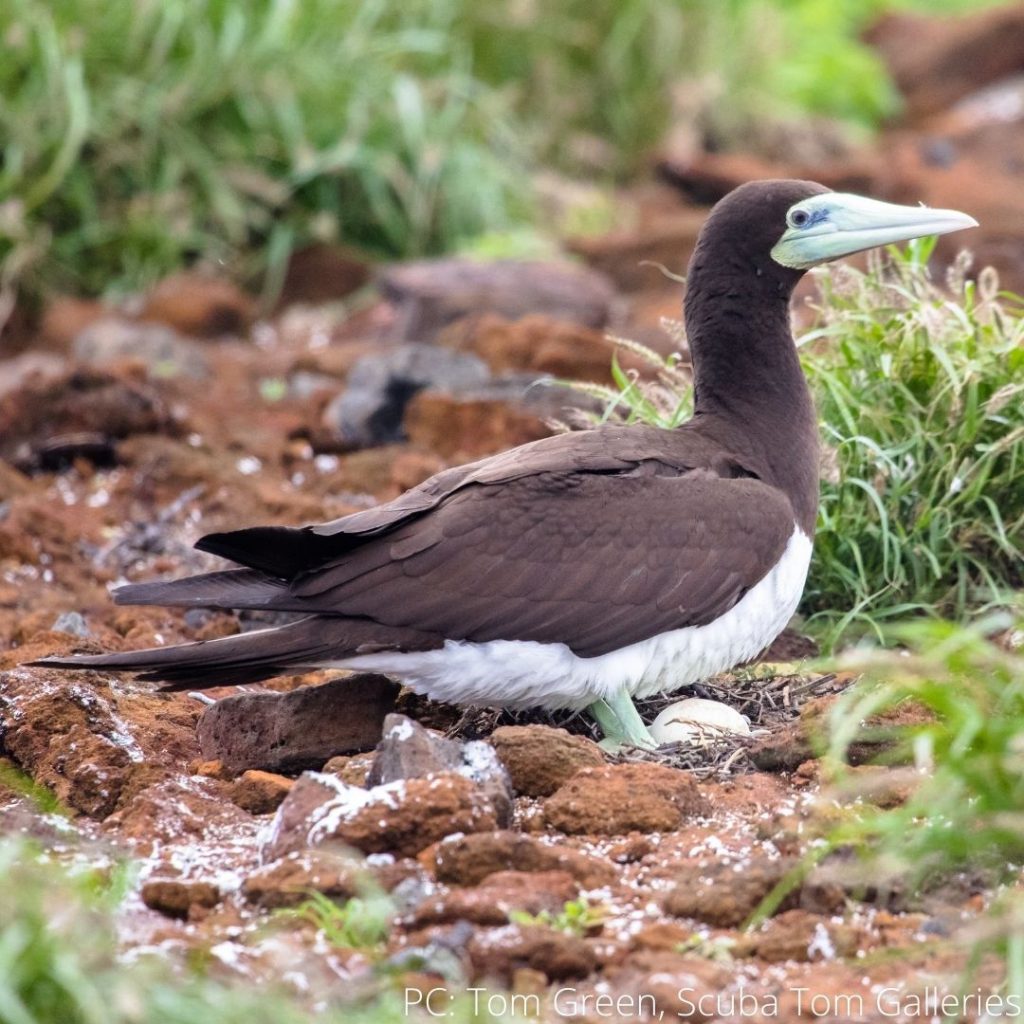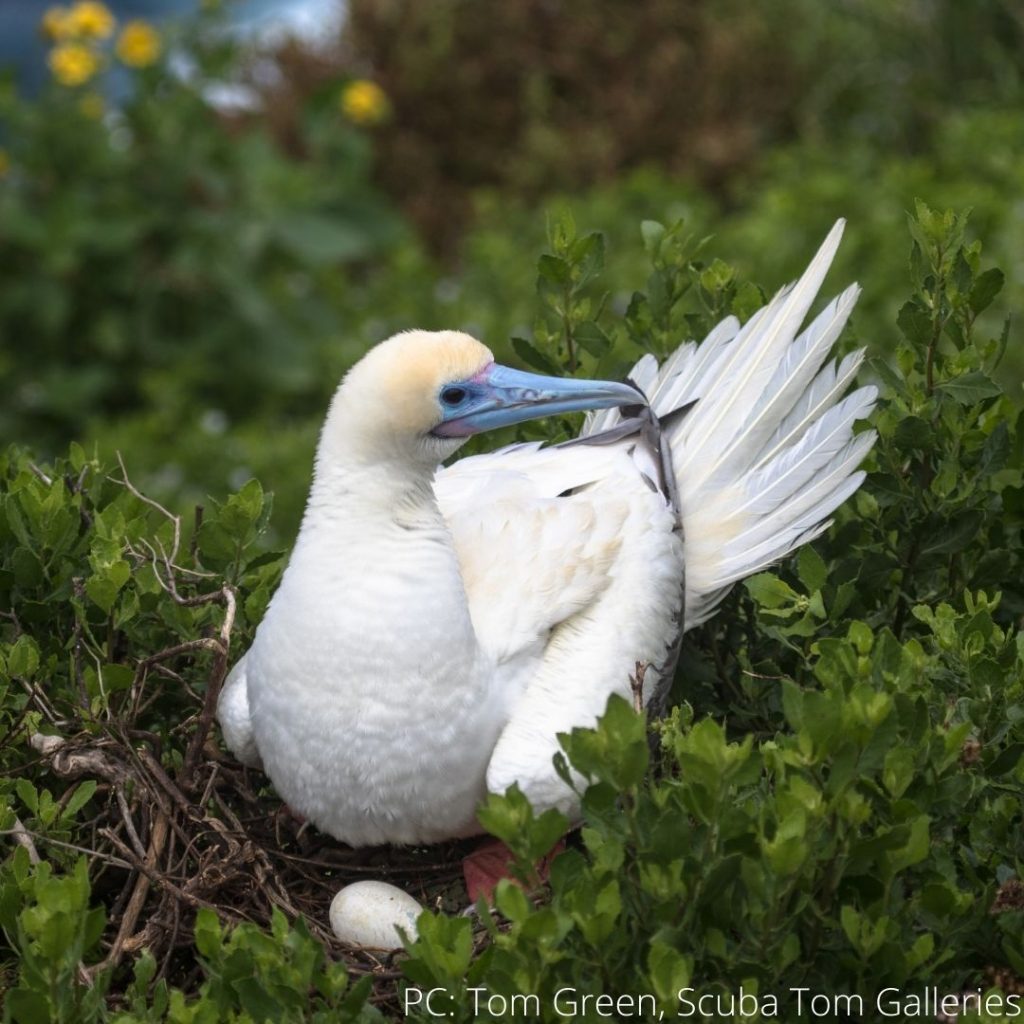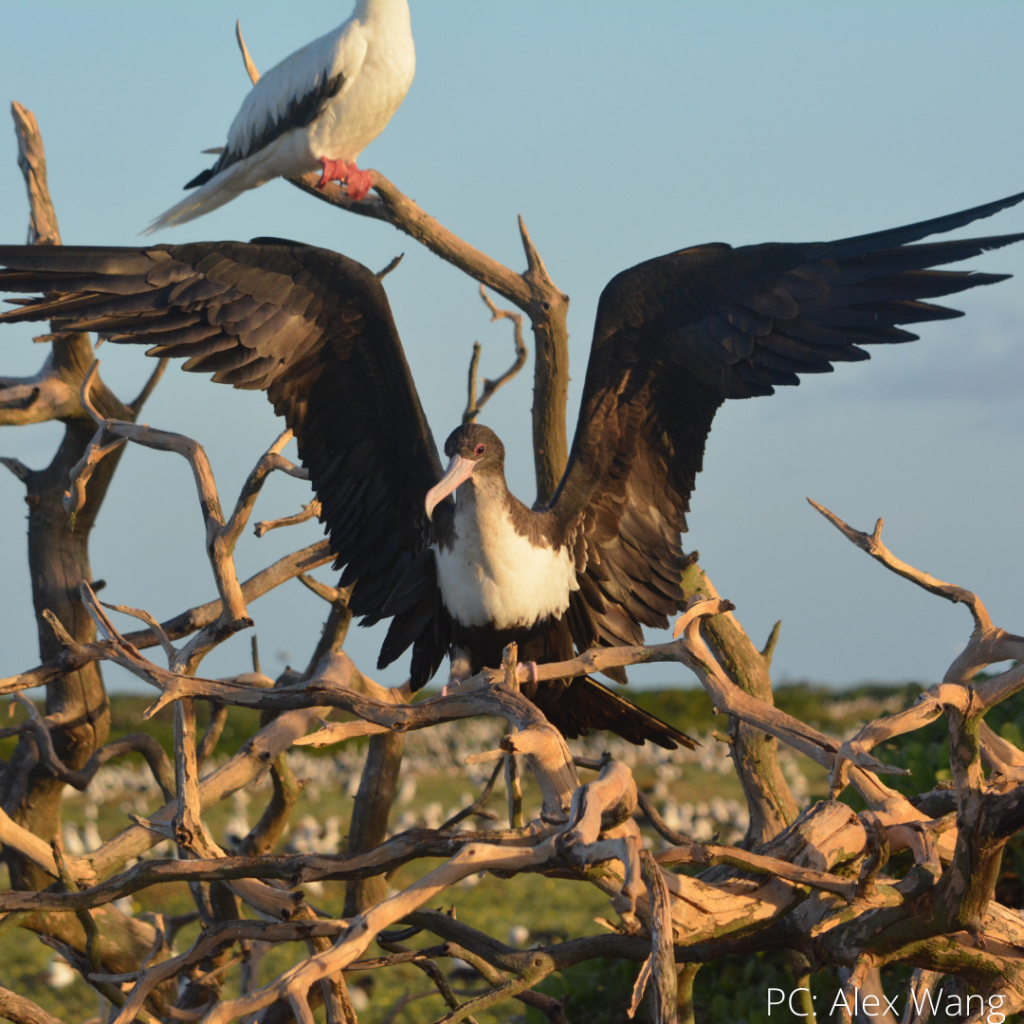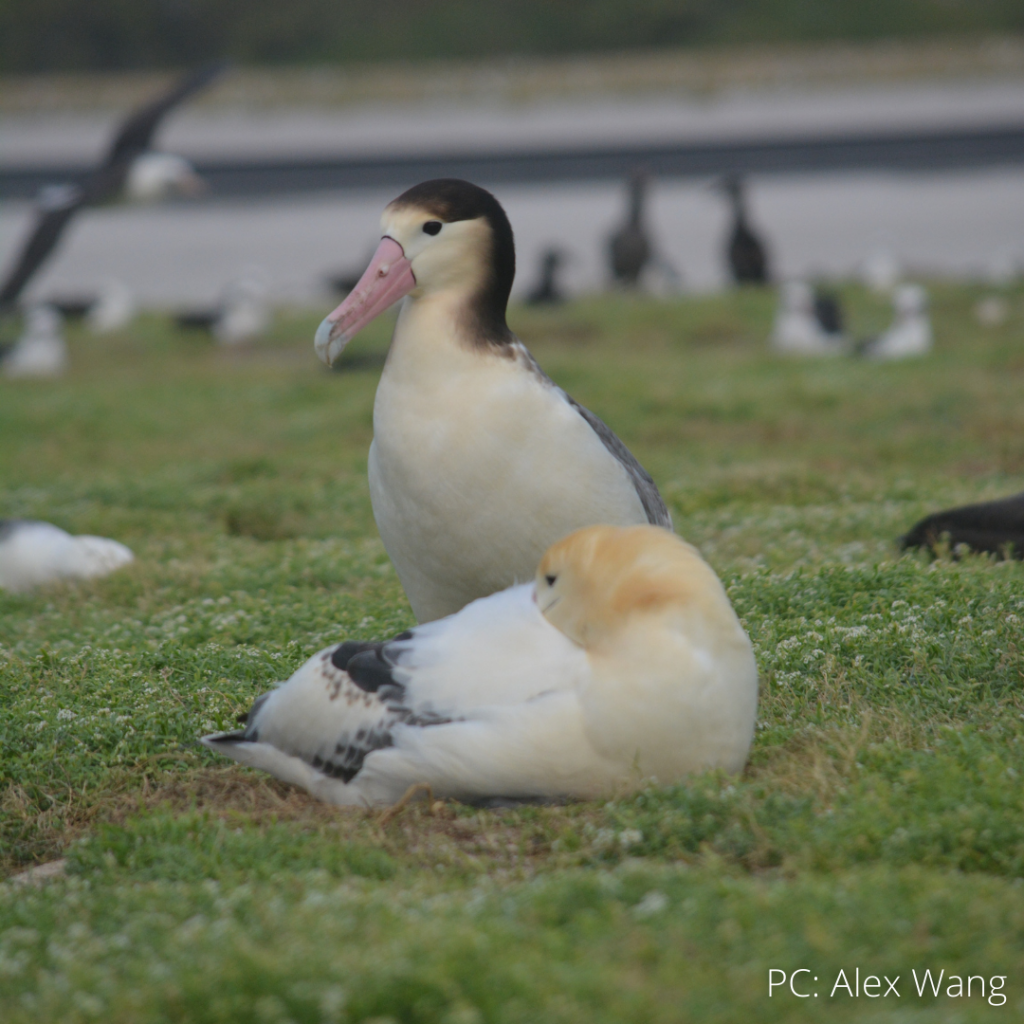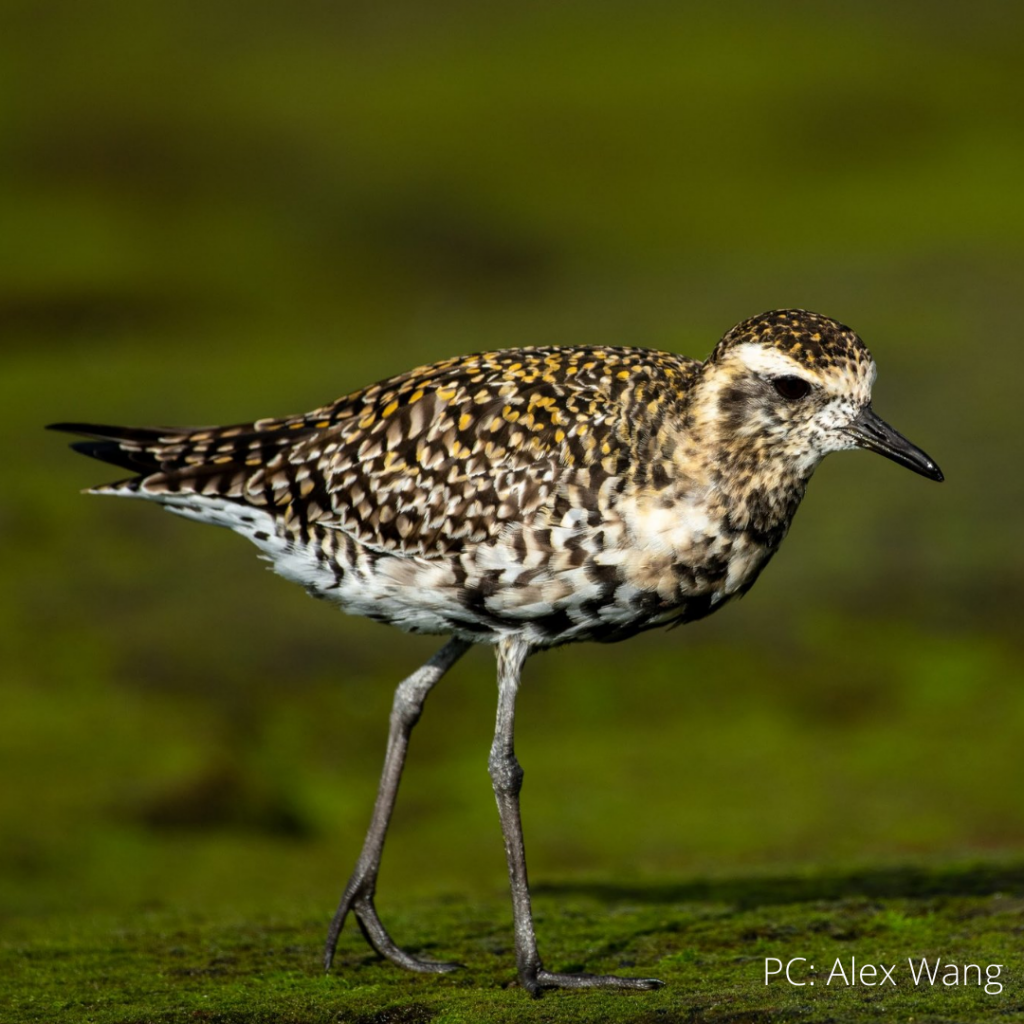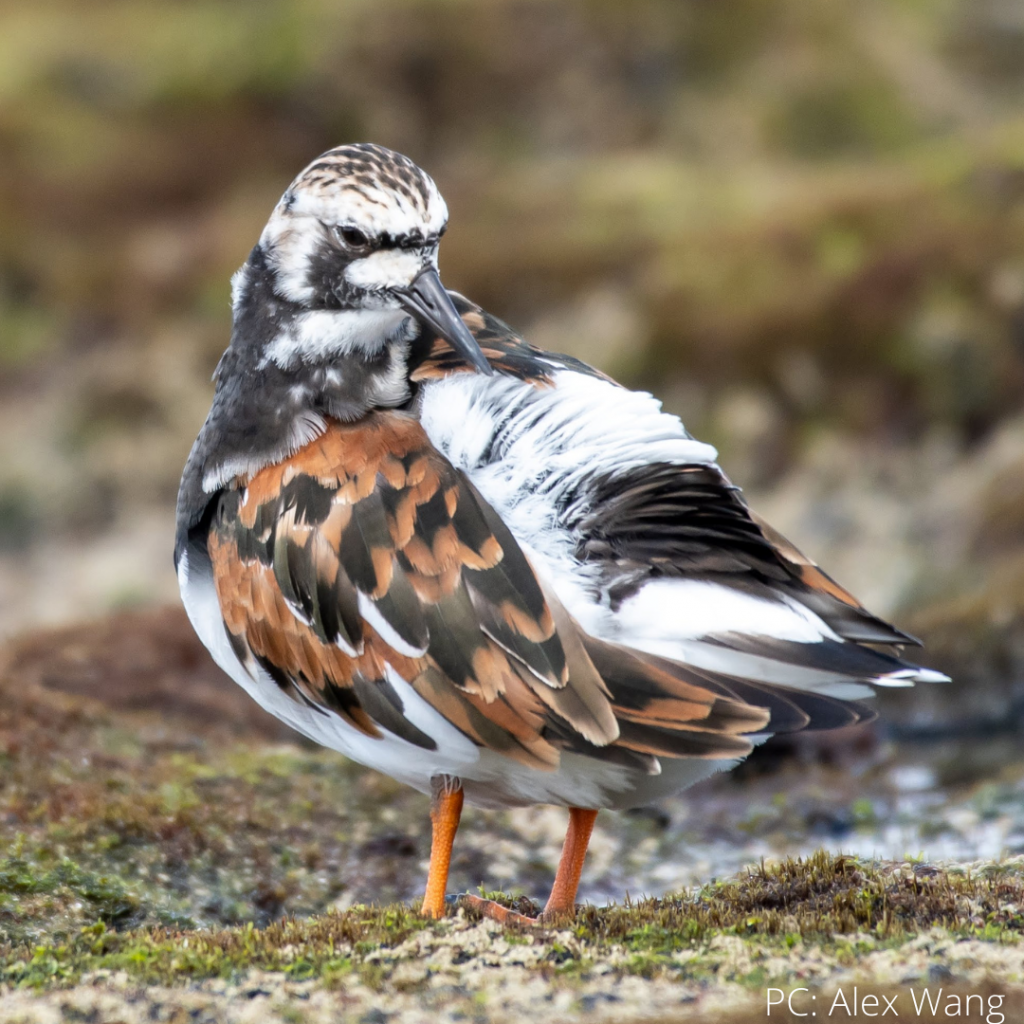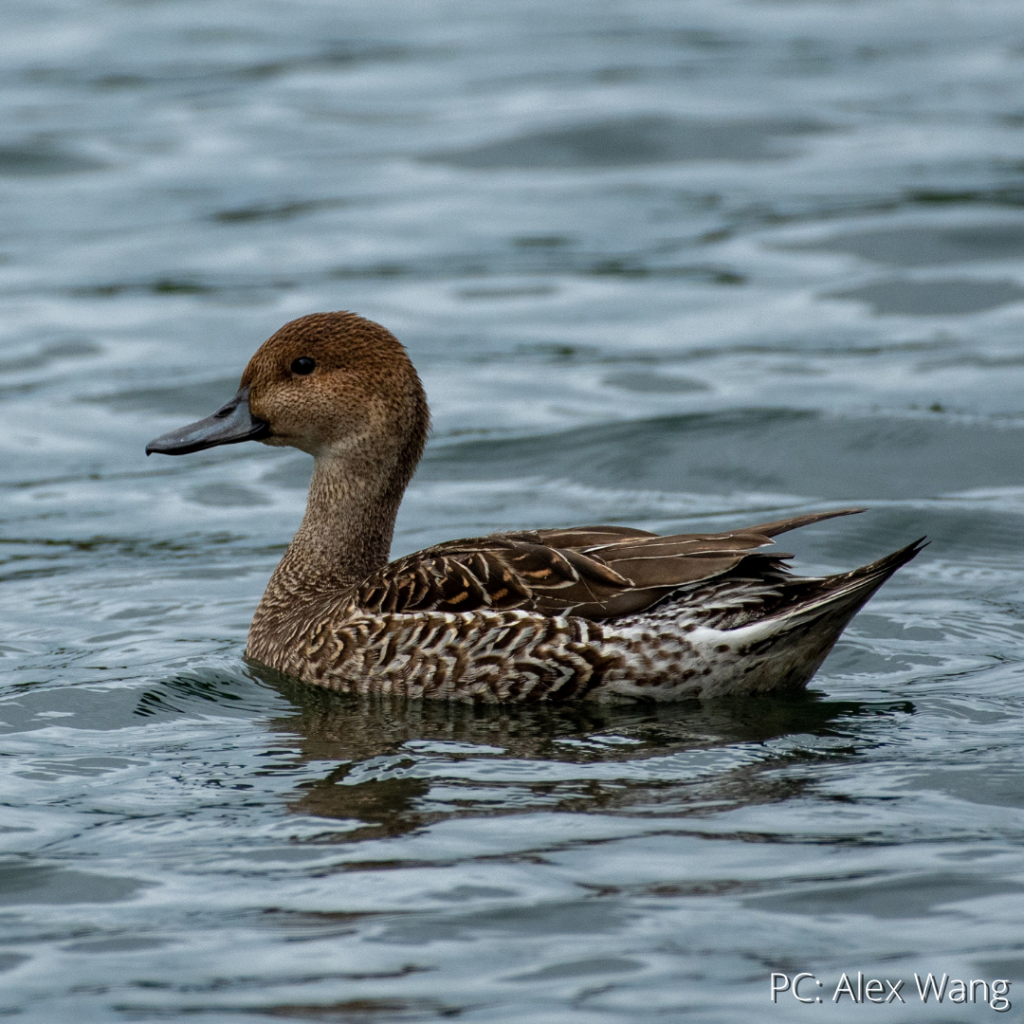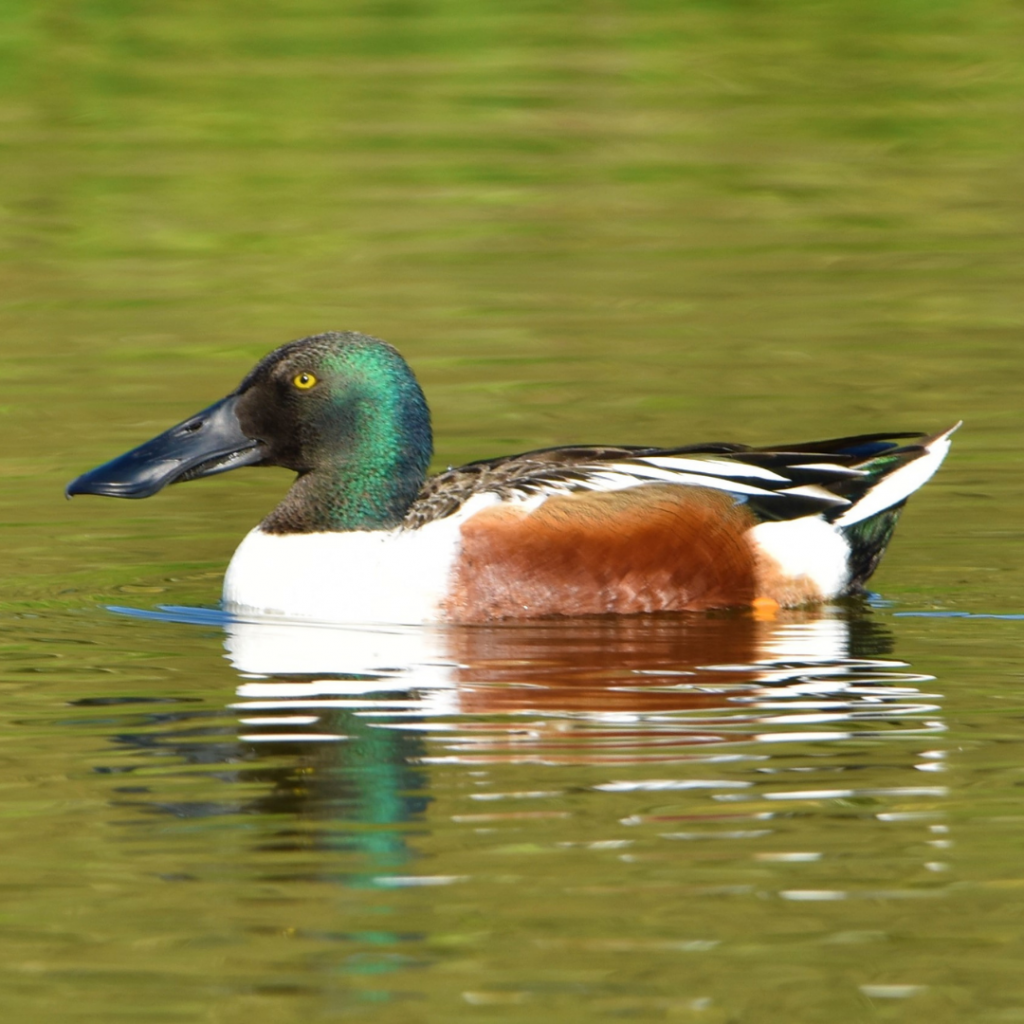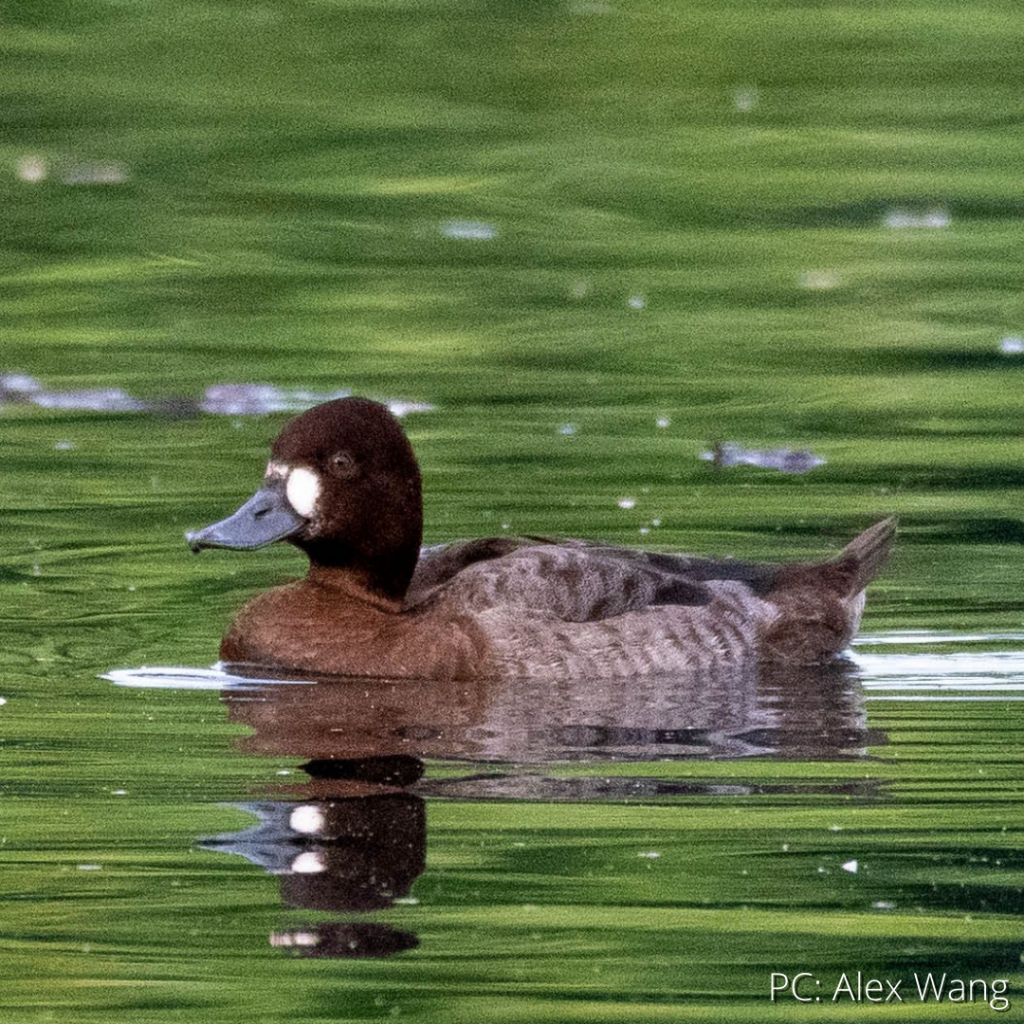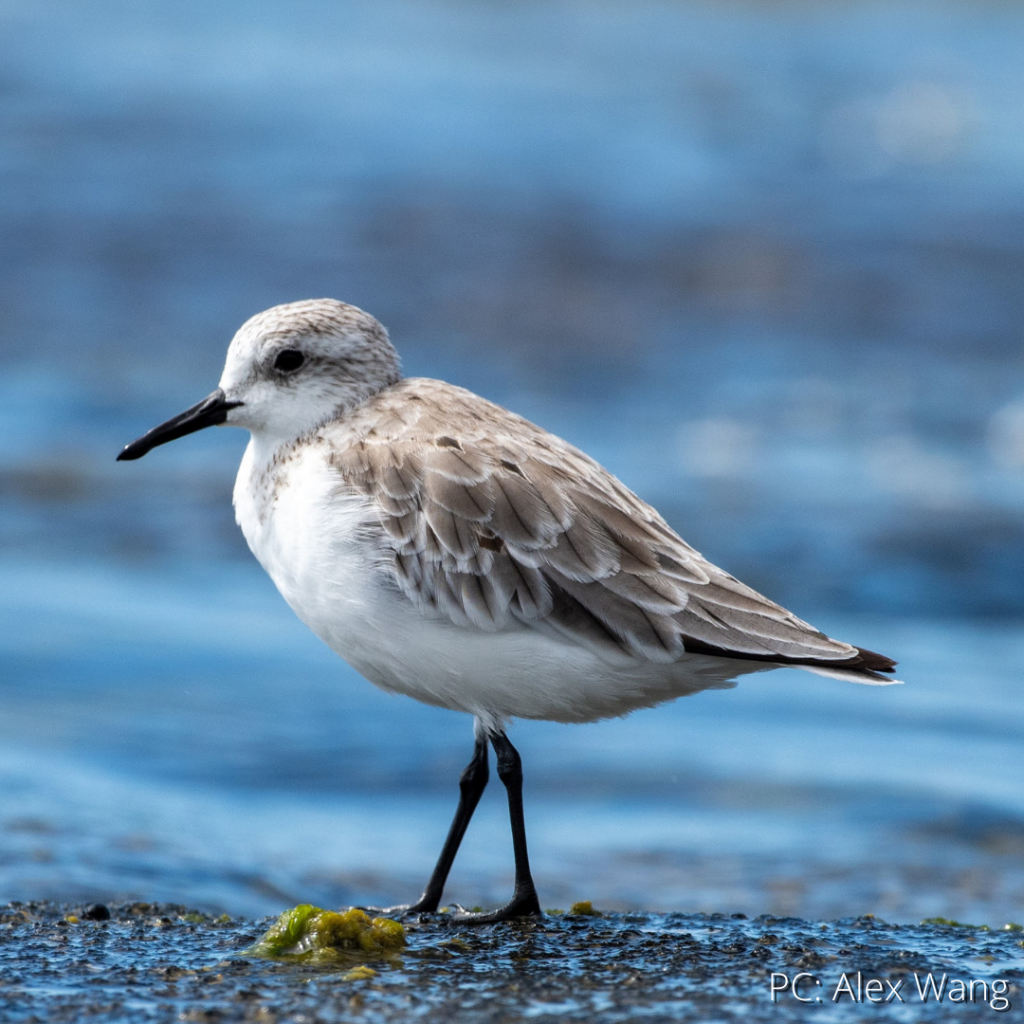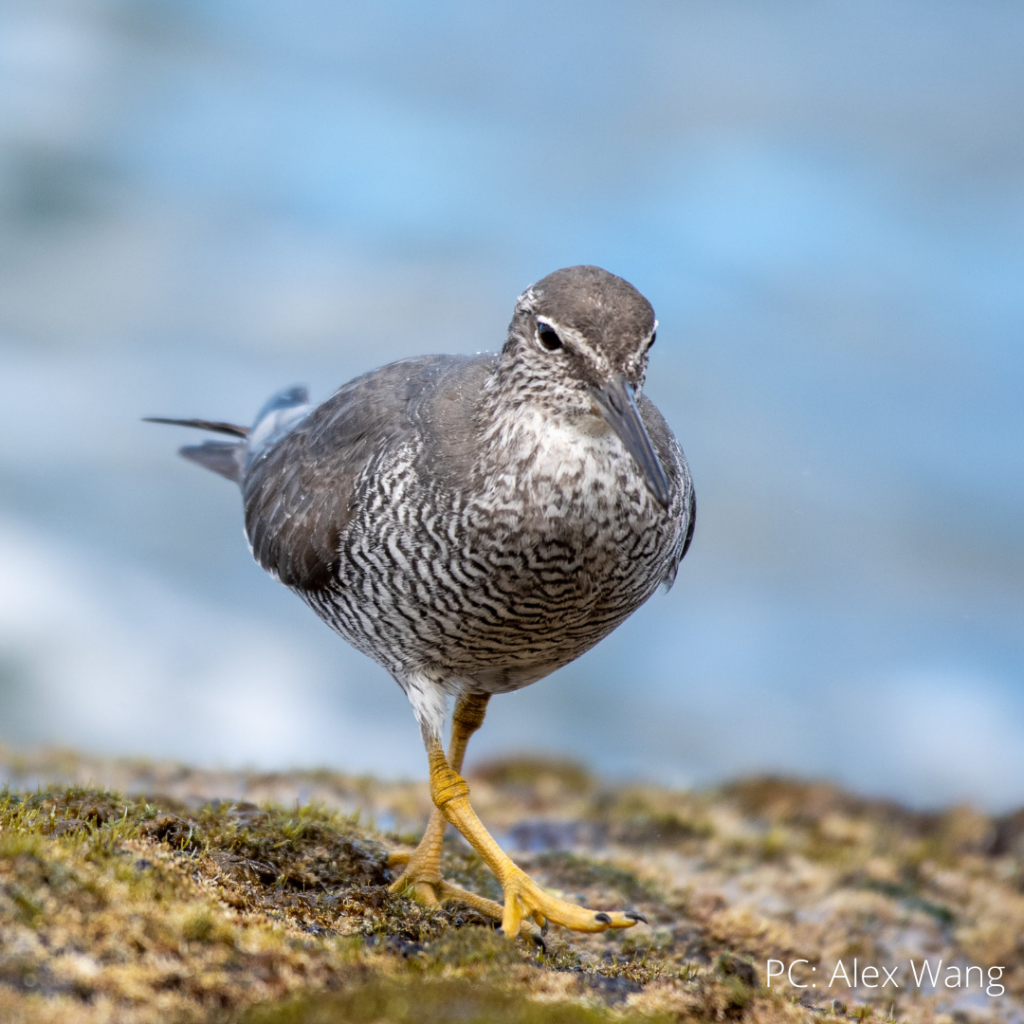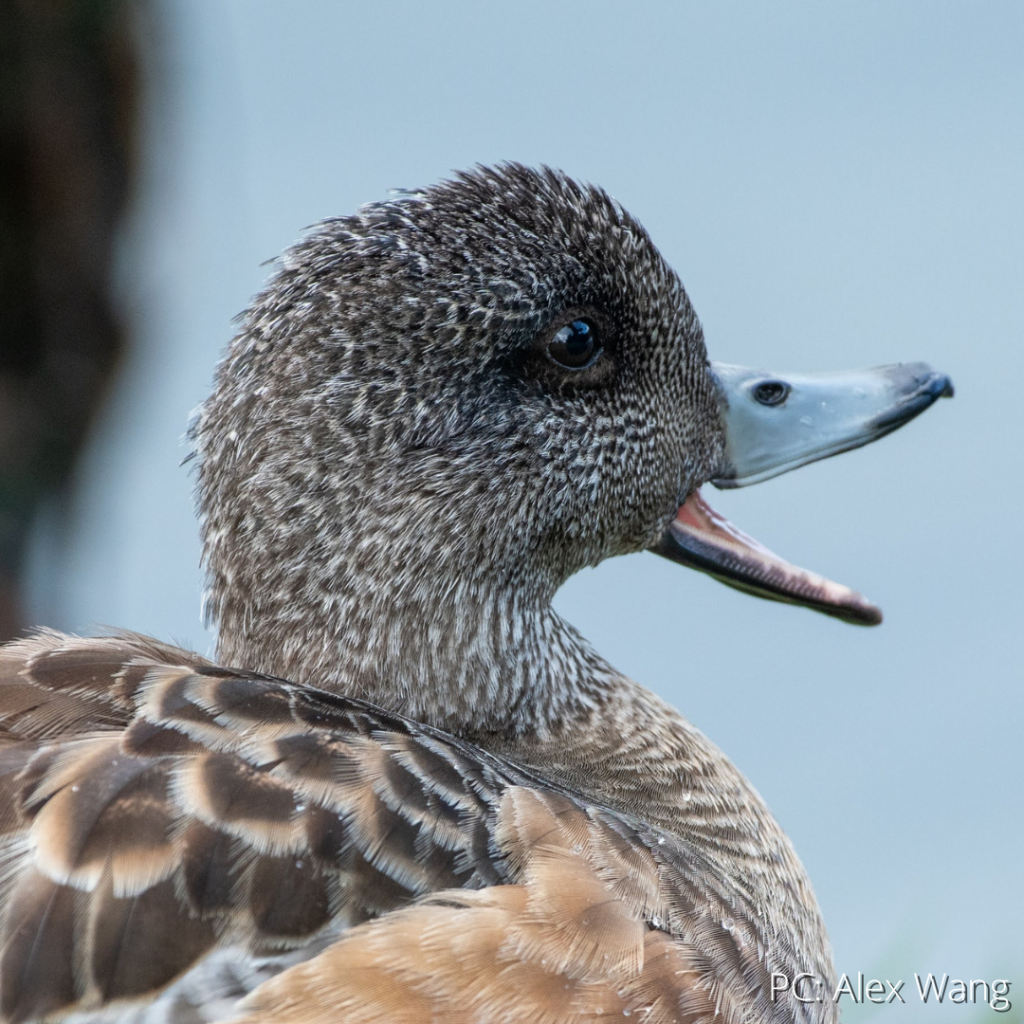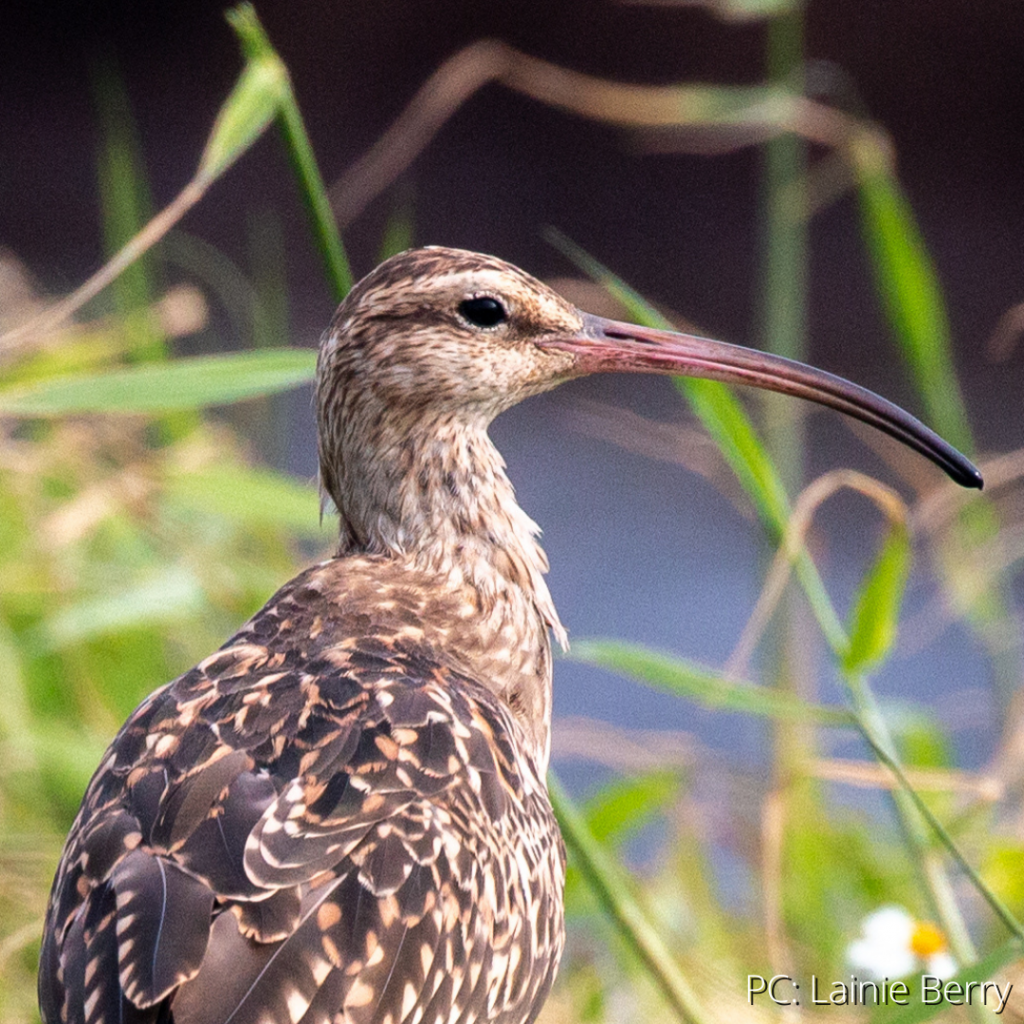Native Birds of Hawaiʻi

Prior to the arrival of humans to the Hawaiian archipelago, the islands supported an incredibly diverse and unique avifauna comprised of at least 113 endemic species. These species ranged from flightless geese, ibis and rails to one of the most famous cases of adaptive radiation – the Hawaiian Honeycreepers (subfamily Drepanidinae), of which at least 59 species have been described. Hawaii also has the unfortunate distinction as one of the epicenters of the extinction of its species. Since human colonization, 71 birds have been confirmed lost, 48 prior to the arrival of Europeans, and 23 since Captain Cook first arrived in 1778. Of the 42 extant endemic taxa, 31 are federally listed (29 species and 2 subspecies), but 10 of these have not been observed in as many as 40 years and are of unknown status.
Key threats to the remaining species include: habitat destruction and degradation by humans and introduced ungulates, non-native diseases and predators (feral cats, barn owls, rats, and mongoose), and habitat-altering invasive plants. Non-native mosquitoes are vectors for avian pox and avian malaria, both of which have had devastating effects on the forest bird populations, which had evolved without these threats. Thus, most of Hawaii’s extant forest birds (passerines) are restricted to high elevation forests (above 1400 meters) or remote islands where mosquitoes are limited by temperature or absent altogether. Managing and researching birds in these areas presents many logistical challenges, including significant expense, difficult field conditions, and the need for ongoing management.
More information on Hawaiʻi’s birds can be found at the links below. Birds marked with an asterisk (*) are presumed extinct.
Categories
Nā Manu Nahele: Forest Birds
Hawaiʻi’s forest birds are world-famous for their diversity, beauty, and (unfortunately) their rarity. Of 84 forest bird species we know of, 28 species are considered “prehistoric,” meaning they are only known from the fossil record and were extinct before modern record keeping began for bird observations. Of the remaining 56 species that existed in Hawaiʻi during its era of human habitation, 30 have gone extinct or are presumed to be extinct. That leaves just 26 forest bird species still in existence today, and 24 of those species are listed by the International Union for the Conservation of Nature as vulnerable, near-threatened, threatened, endangered, or critically endangered. Only two native forest bird species are designated as having healthy populations that are of the “least concern” for extinction risk: the ʻapapane and the Hawaiʻi ʻamakihi.
Forest Birds: Hawks, Owls, and Crows
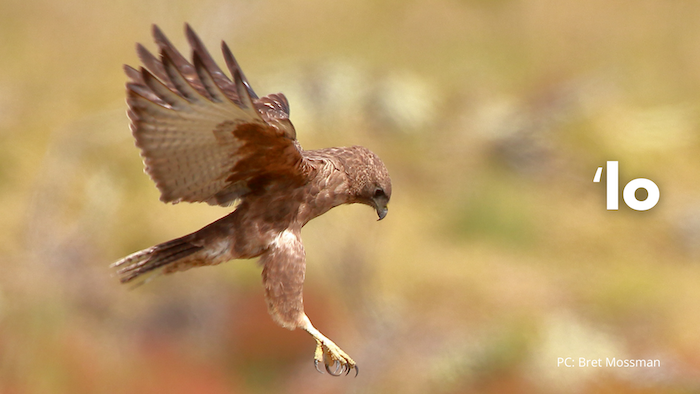 ʻIo
ʻIo
Hawaiʻi Island
Near Threatened
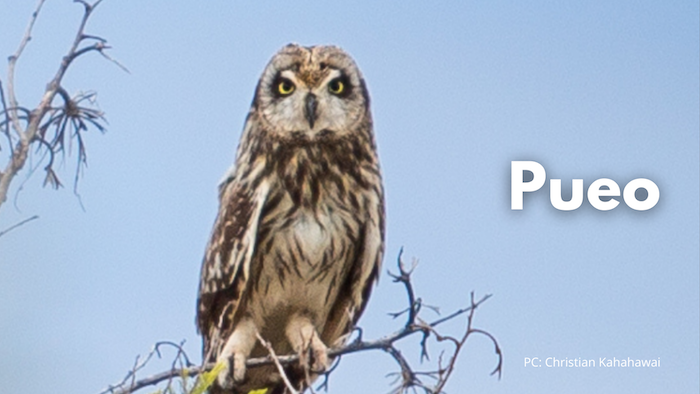 Pueo
Pueo
All Main Islands
State-listed Endangered (Oʻahu)
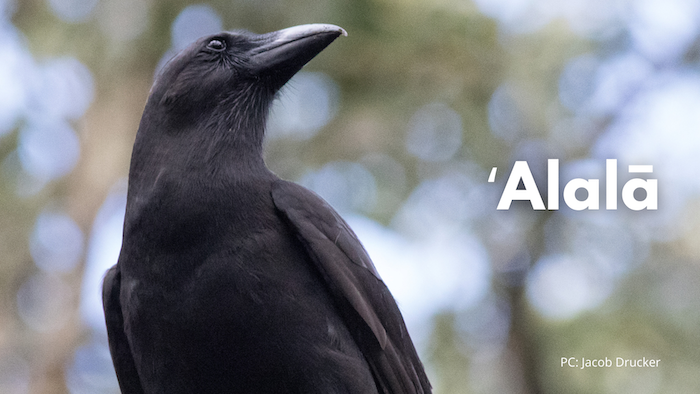 ʻAlalā
ʻAlalā
Extinct in the Wild
Critically endangered
Forest Birds: Flycatchers
Forest Birds: Thrushes
Forest Birds: Warblers
Forest Birds: Honeyeaters
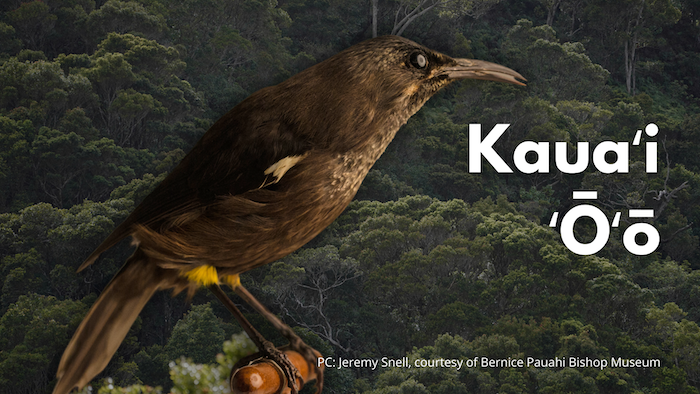 Kauaʻi ‘Ō‘ō or ‘Ō‘ōʻāʻā
Kauaʻi ‘Ō‘ō or ‘Ō‘ōʻāʻā
Extinct
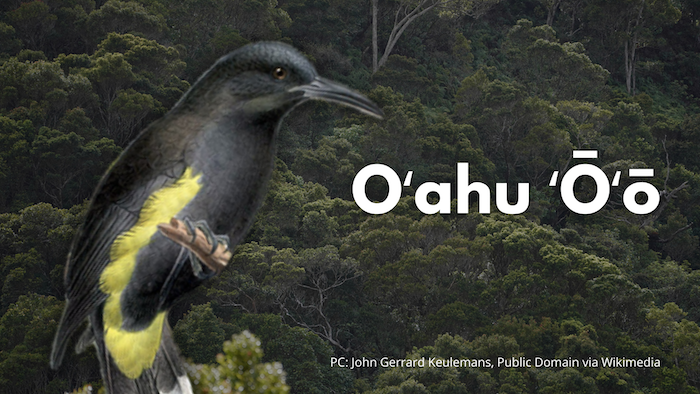 O‘ahu ‘Ōʻō
O‘ahu ‘Ōʻō
Extinct
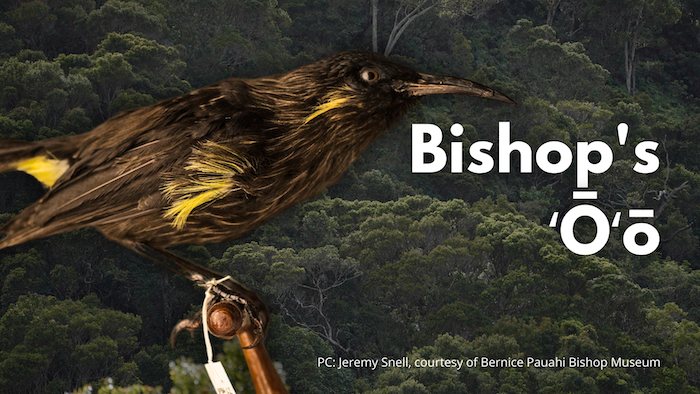 Molokai ʻŌʻō or Bishop’s ʻŌʻō
Molokai ʻŌʻō or Bishop’s ʻŌʻō
Extinct
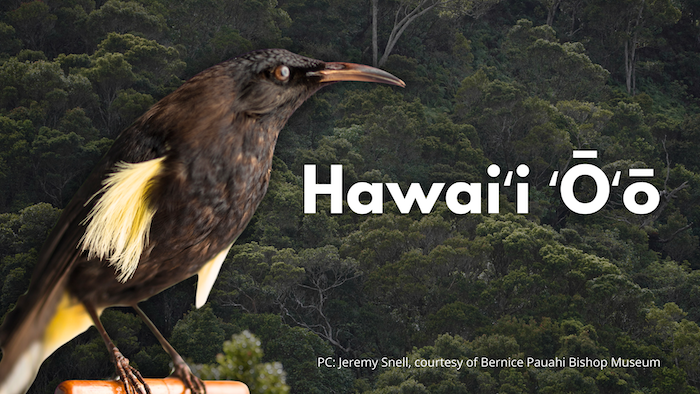 Hawaiʻi ‘Ō‘ō
Hawaiʻi ‘Ō‘ō
Extinct
Forest Birds: Honeycreepers
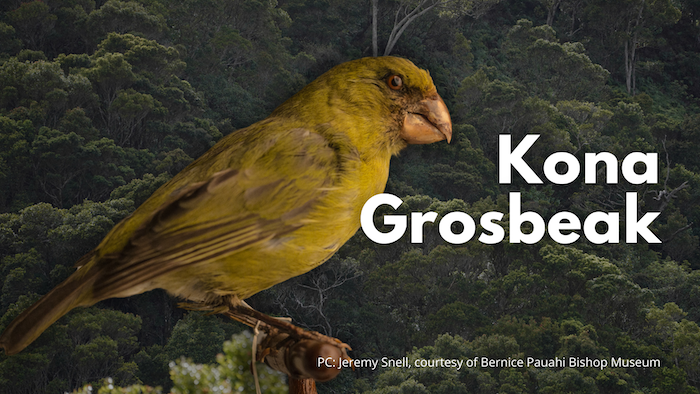 Kona Grosbeak
Kona Grosbeak
Extinct
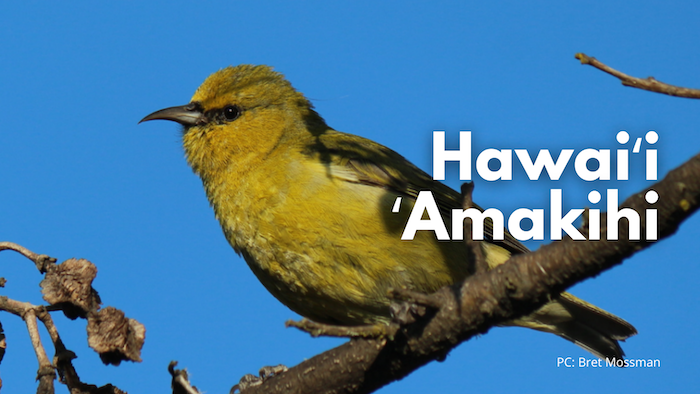 Hawaiʻi ʻAmakihi
Hawaiʻi ʻAmakihi
Least Concern
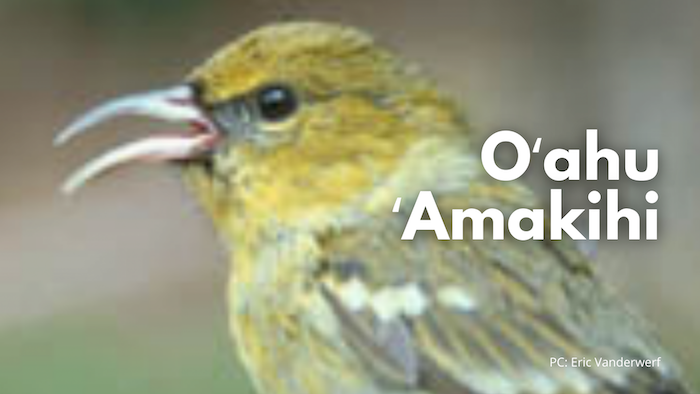 Oʻahu ʻAmakihi
Oʻahu ʻAmakihi
Vulnerable
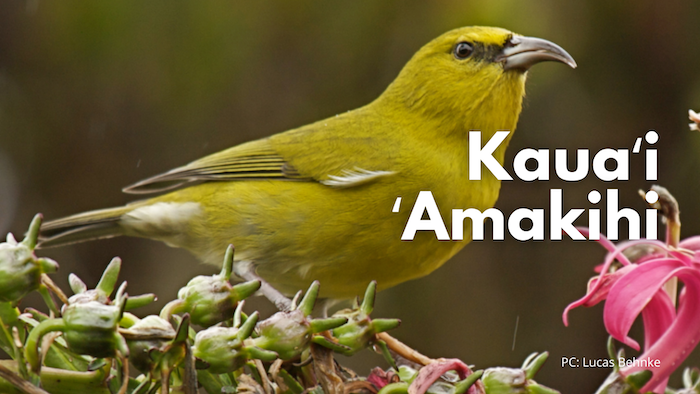 Kauaʻi ʻAmakihi
Kauaʻi ʻAmakihi
Vulnerable
 Nukupololei or Greater ʻAmakihi
Nukupololei or Greater ʻAmakihi
Extinct
 ʻUla-ʻai-hāwane
ʻUla-ʻai-hāwane
Extinct
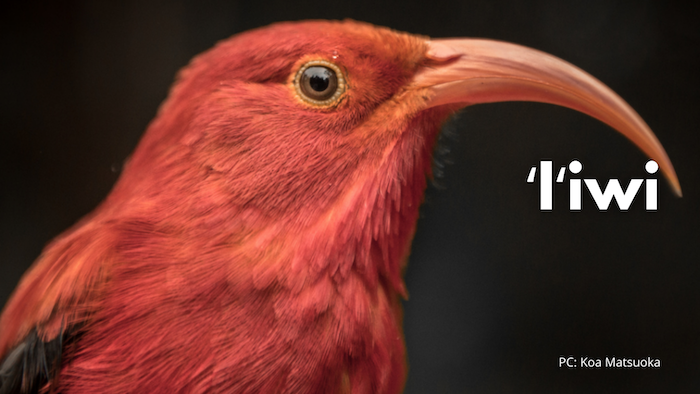 ‘I‘iwi
‘I‘iwi
Vulnerable
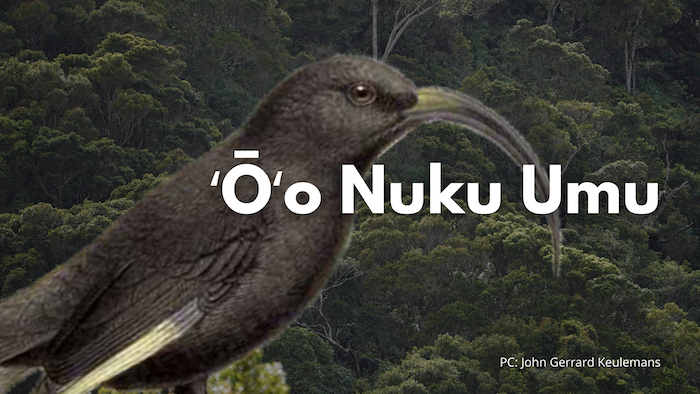 ‘Ō’ō nuku umu or Black Mamo
‘Ō’ō nuku umu or Black Mamo
Extinct
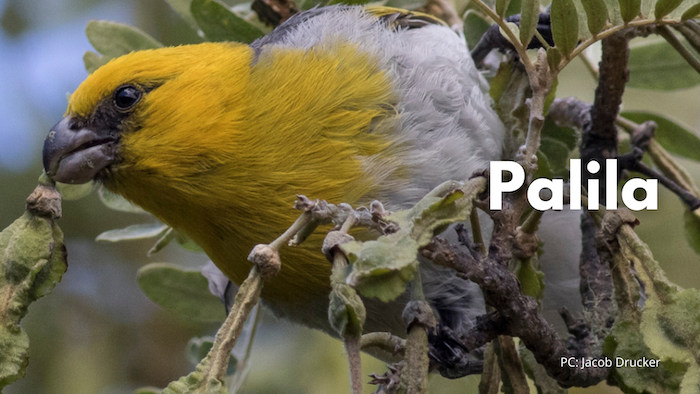 Palila
Palila
Critically Endangered
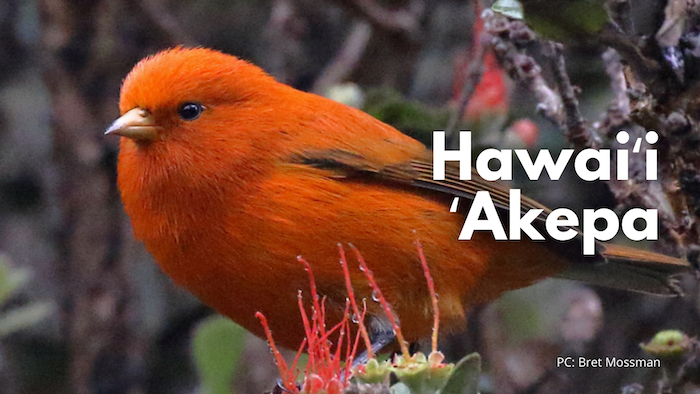 Hawaiʻi ʻĀkepa
Hawaiʻi ʻĀkepa
Endangered
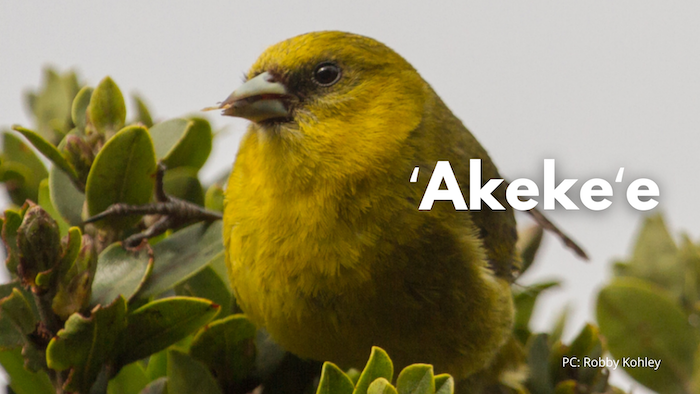 ʻAkekeʻe
ʻAkekeʻe
Critically Endangered
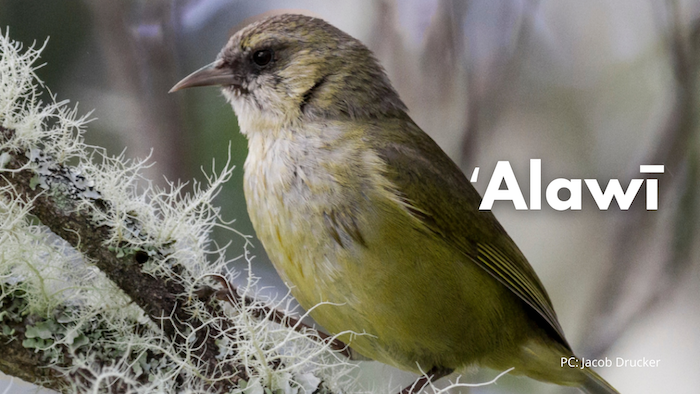 ʻAlawī or Hawaii Creeper
ʻAlawī or Hawaii Creeper
Endangered
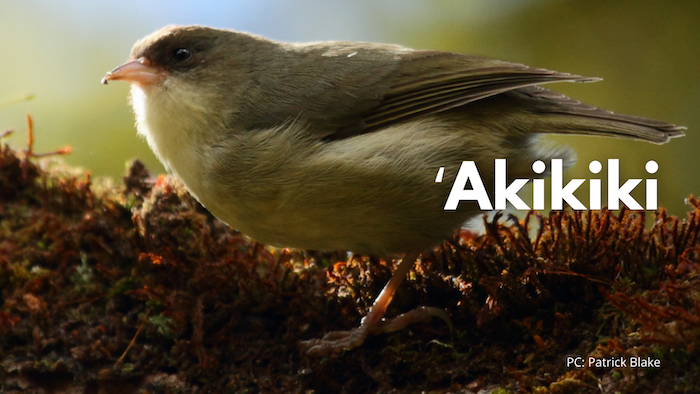 ʻAkikiki
ʻAkikiki
Critically endangered
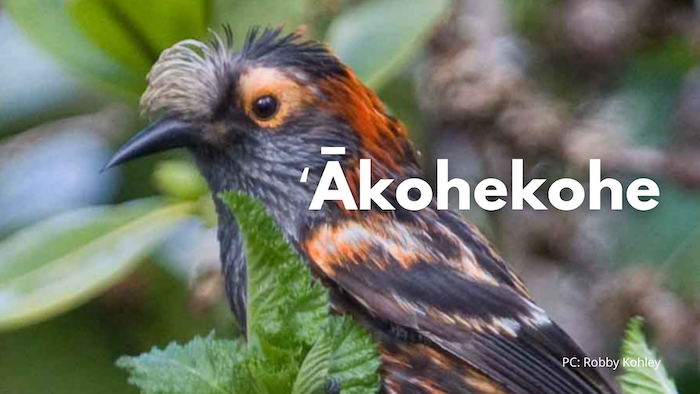 ʻĀkohekohe
ʻĀkohekohe
Critically endangered
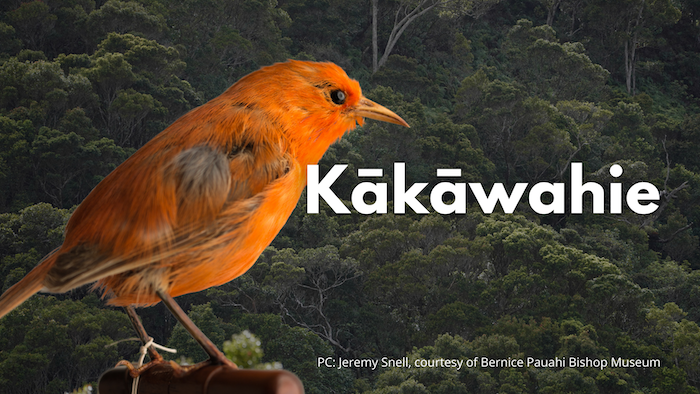 Kākāwahie
Kākāwahie
Extinct
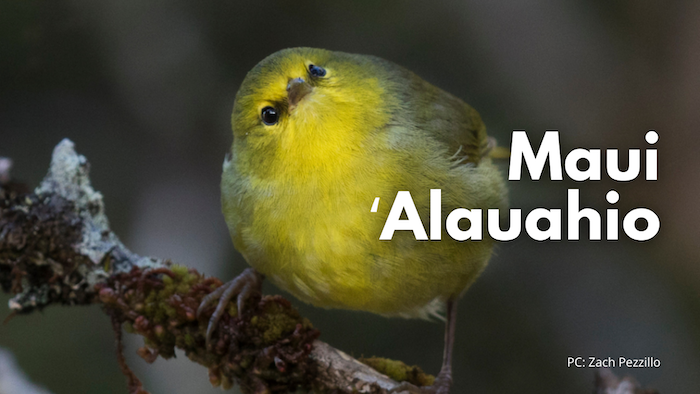 Maui ‘Alauahio
Maui ‘Alauahio
Endangered
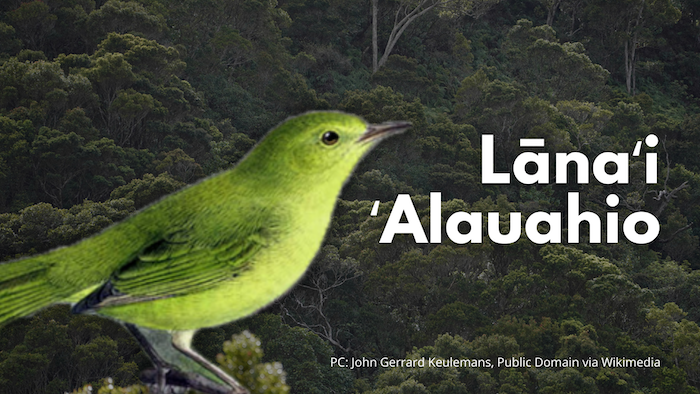 Lānaʻi ‘Alauahio
Lānaʻi ‘Alauahio
Presumed extinct
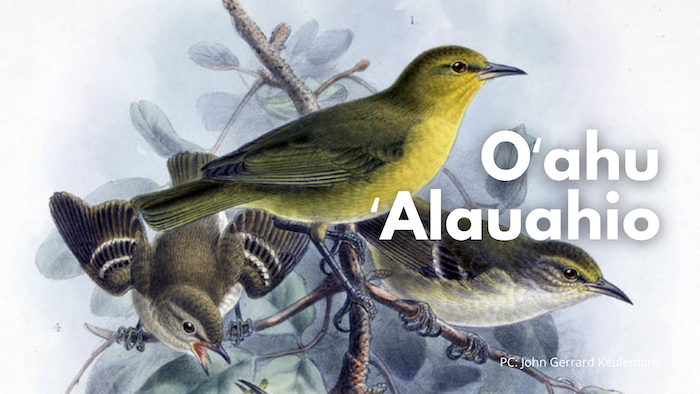 Oʻahu ‘Alauahio
Oʻahu ‘Alauahio
Extinct
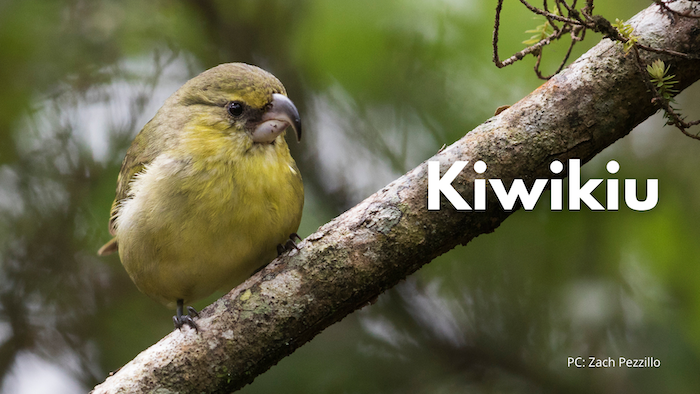 Kiwikiu
Kiwikiu
Critically Endangered
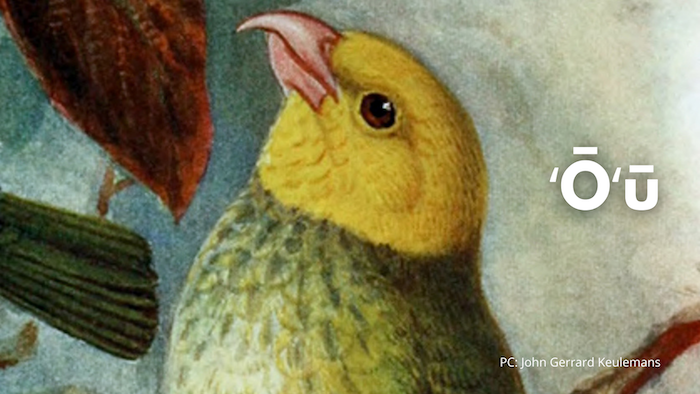 ʻŌʻū
ʻŌʻū
Extinct
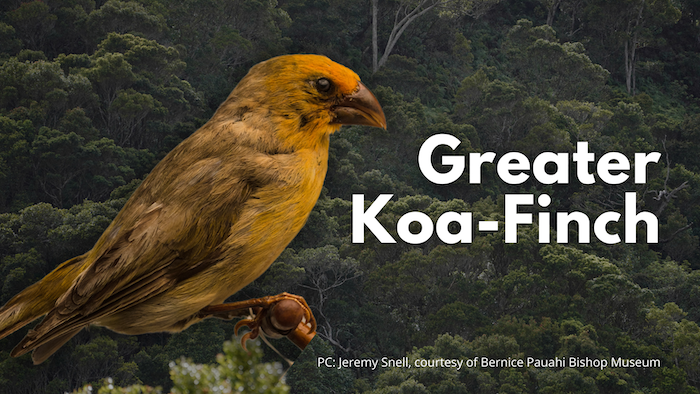 Greater Koa-Finch
Greater Koa-Finch
Extinct
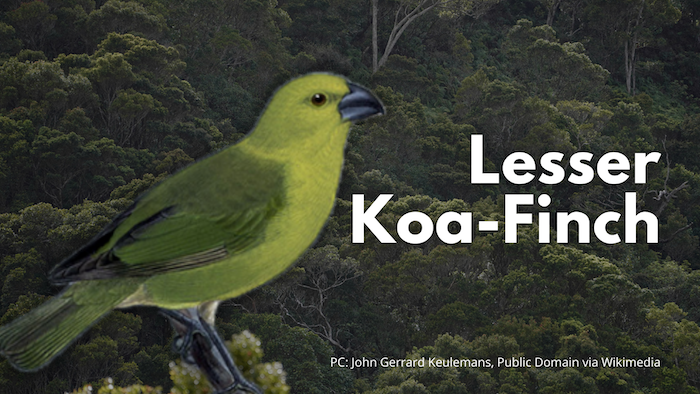 Lesser Koa-Finch
Lesser Koa-Finch
Extinct
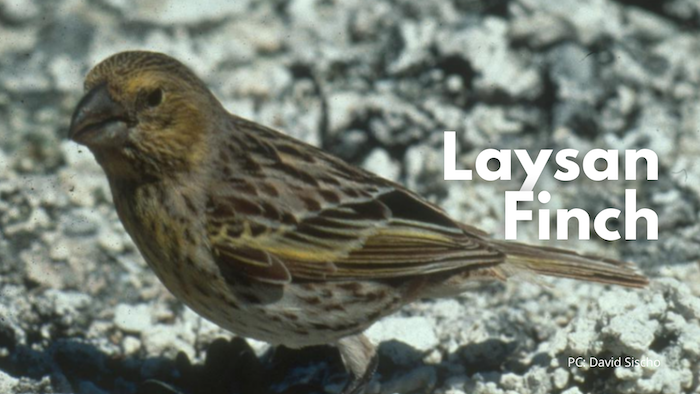 Laysan Finch
Laysan Finch
Vulnerable
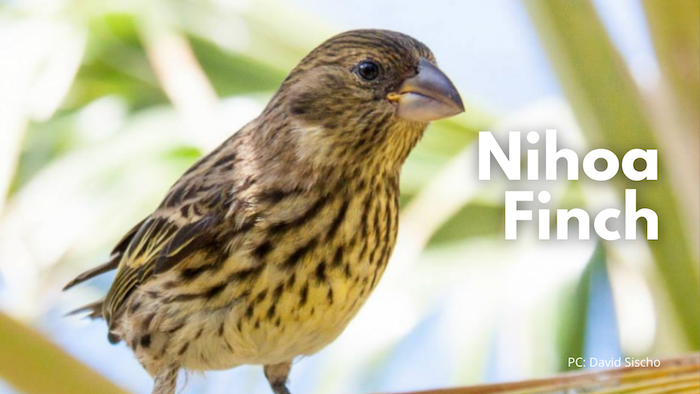 Nihoa Finch
Nihoa Finch
Critically Endangered
Hover your mouse over any bird to see its name, and click to hear its song. Our forest image below contains birds from all across the Hawaiʻi, but in real life some of these birds would never meet since they live on different islands.
Island Choruses
Ready to be immersed in a forest teeming with birds? The tracks below play a forest bird chorus for each island, mixing the birdsongs of native forest birds within each island for Kauaʻi, Oʻahu, Maui, and Hawaiʻi Island.
Chorus: Kauaʻi
Chorus: Oʻahu
Chorus: Maui
Chorus: Hawaiʻi Island
Birdsongs by Island, Narrated
The tracks below present forest birds from each island, played in sequence (rather than as a chorus). The tracks are narrated with the names of the birds you’ll hear.
Birdsongs: Kauaʻi
Birdsongs: Oʻahu
Birdsongs: Maui
Birdsongs: Hawaiʻi Island
See the bottom of this page for audio credits.
Waterbirds
|
(Hawaiian duck) |
(Hawaiian common moorhen) |
(Hawaiian coot) |
(Hawaiian goose) |
|
(Hawaiian stilt) |
(Black-crowned night heron) |
Seabirds
|
(Laysan albatross) |
(Black-footed albatross) |
(White-tailed tropicbird) |
(Red-tailed tropicbird) |
|
(Bulwer’s petrel) |
|
(Hawaiian petrel) |
(Band-rumped storm petrel) |
|
Tristram’s (sooty) storm petrel
|
(Wedge-tailed shearwater) |
(Newell’s shearwater) |
|
|
(White (fairy) tern) |
(Sooty tern) |
(Gray-backed tern) |
(Hawaiian black noddy) |
|
(Brown noddy) |
|
(Masked (blue-faced) booby) |
(Brown booby) |
|
(Red-footed booby) |
(Great frigatebird) |
(migratory) |
Migratory Birds
|
(Pacific golden plover) |
(Ruddy turnstone) |
(Northern pintail) |
(Northern shoveler) |
|
|
(Sanderling) |
(Wandering tattler) |
|
|
(Bristle-thighed curlew) |
Some of the audio used on this page was mixed from original tracks at xeno-canto.org, including XC216038 – Akikiki – Oreomystis bairdi- Patrick Blake; XC27320 – Akekee – Loxops caeruleirostris – Dan Lane; XC144892 – Puaiohi – Myadestes palmeri- Eric Vanderwerf; XC27338 – Anianiau – Magumma parva- Dan Lane; XC27316 – Kauai Amakihi – Chlorodrepanis stejnegeri- Daniel Lane; XC27337 – Kauai Elepaio – Chasiempis sclateri- Daniel Lane; XC58937 – Iiwi – Drepanis coccinea- Frank Lambert; XC505432 – Apapane – Himatione sanguinea- Rich Sharloch; XC454888 – Oahu Amakihi – Chlorodrepanis flava- Sean Erroll MacDonald; XC410155 – Oahu Elepaio – Chasiempis ibidis- Dan Lane; XC122342 – Akohekohe – Palmeria dolei- Brooks Rownd; XC123887 – Maui Parrotbill – Pseudonestor xanthophrys- Brooks Rownd; XC58973 – Maui Alauahio – Paroreomyza montana- Frank Lambert; XC503722 – Hawaii Amakihi – Chlorodrepanis virens- Pheonix birder; XC124707 – Hawaiian Hawk – Buteo solitarius- Brooks Rownd; XC124794 – Hawaii Akepa – Loxops coccineus- Brooks Rownd; XC175246 – Hawaii Elepaio – Chasiempis sandwichensis bryani- Dan Lane; XC145608 – Palila – Loxioides bailleui- Eric Wanderwerf; XC747456 – Akiapolaau – Hemignathus wilsoni- Brooks Rownd; XC127667 – Alawai Hawaii Creeper – Loxops mana; XC27372 – Short-eared Owl – Asio flammeus- Dan Lane; XC58932 – Omao – Myadestes obscurus- Frank Lambert

